Featured
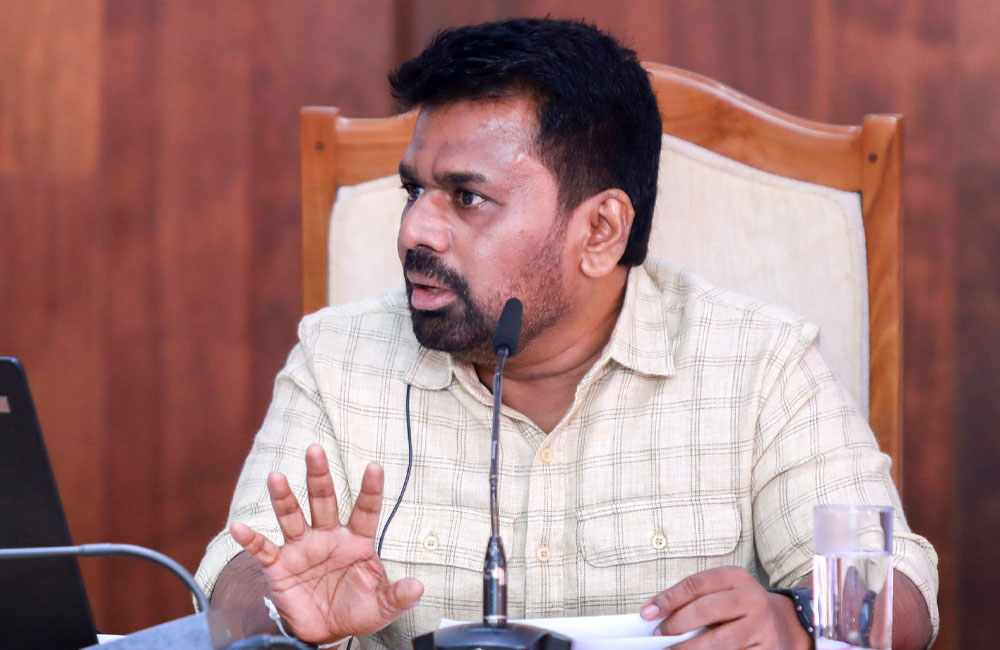
AKD rejects another economic crisis while Rajapaksas blamed for dismantling key ministry on disasters
Despite Cyclone Ditwah’s departure from the country after causing much destruction to human lives and property weeks ago, Sri Lanka continues to be in the eye of a socioeconomic and political storm in Ditwah’s aftermath. President Anura Kumara Dissanayake (AKD) seems to be shouldering the heavy burden of rebuilding the country, with a majority of the Janatha Vimukthi Peramuna (JVP)-led National People’s Power (NPP) Government engaged in verbal clashes with members of the Opposition.
The arduous and mostly costly task of rebuilding the country following the recent disaster is expected to take time, with even senior Government members stating that it will take close to two years for the completion of the complete rebuilding programme. While a final estimation of the total damage caused and the cost for rebuilding is yet to be announced, officials believe that the cost could amount to around $ 7–8 billion.
However, the announcement by the International Monetary Fund (IMF) on Friday (19) evening that its Executive Board had approved emergency financing for Sri Lanka under the Rapid Financing Instrument (RFI) that would provide the country with around $ 206 million undoubtedly provided some reprieve to President AKD and his Government.
Meanwhile, persons affected by the disaster as well as Opposition politicians continue to point out to the Government the delay in distributing the cash grants that were announced by the President on 5 December in Parliament.
Responding to these statements, Public Security Minister Ananda Wijepala told Parliament last week that the initial grant of Rs. 25,000 paid for flood-affected families to clean their houses had so far been distributed among 257,000 families out of the total of 493,000 entitled to the payment. He also stated that out of the 610,000 families affected by the cyclone, 493,000 families were eligible to receive the initial grant of Rs. 25,000 and that Rs. 6.4 billion had been paid out of the total allocation of Rs. 17.6 billion.
The President last week also outlined more relief packages to businesses that were affected by the recent cyclone. He also rejected claims that the proposed Rs. 500 billion supplementary allocation would lead to national bankruptcy by April 2026.
President AKD noted in Parliament on Friday (19), at the conclusion of the debate on the Rs. 500 billion supplementary estimate that was presented to Parliament, that Sri Lanka would use a Rs. 1,200 billion cash buffer in the Treasury for cyclone relief and recovery.
“For a long time, the Treasury account was in overdraft. In 2018, it was Rs. 180 billion, in 2019 Rs. 244 billion, in 2020 Rs. 575 billion, and in 2021 it rose to Rs. 821 billion,” the President said. “In contrast, by November 2025, under our Government, the Treasury account showed a positive balance of Rs. 1,202 billion – a Rs. 2 trillion improvement,” he said.
“If we did not have the cash buffer we would have had to look for other ways to finance the spending,” he added.
AKD firmly dismissed claims by some members of the Opposition that the relief package announced by the Government would result in the country being pulled back into another economic crisis by April next year. He explained that the decisions regarding Government expenditure were being made after cautious consideration.
Seeking a PSC
Meanwhile, a group of Opposition Members of Parliament (MPs) handed over a letter to the Speaker of Parliament to appoint a Parliamentary Select Committee (PSC) to probe the reason for the delay by relevant authorities in communicating to the public regarding the cyclone that hit the country late last month and the allegation that early warnings by the relevant State institutions had not been heeded by the authorities.
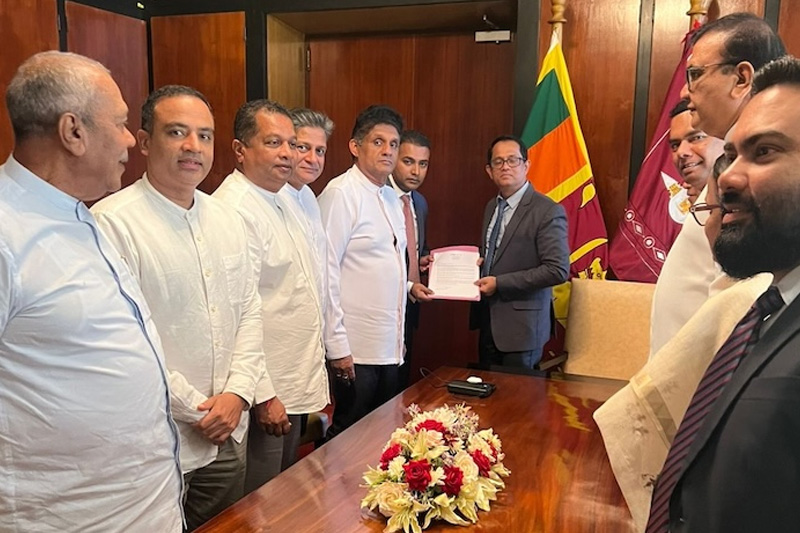
Led by Opposition Leader Sajith Premadasa, the Opposition MPs had noted in the proposal that weather warnings had been issued in advance by the Department of Meteorology and international media outlets, with interpretations made available prior to landfall, and that despite this, relevant authorities had failed to take adequate preparatory measures.
The MPs had stated that this lack of preparedness was deeply regrettable and asserted that many lives could have been saved if timely action had been taken. They had also drawn parallels to past crises – the Easter Sunday attacks and the economic collapse – during which special parliamentary committees were appointed.
The proposal had also requested that the committee consist of 30 members, with proportional representation from both Government and Opposition parties, and include members from all 22 districts affected by the cyclone.
Scrapping a key ministry
While the Opposition sought the appointment of a PSC to probe the failures during the recent disaster, the Frontline Socialist Party (FSP), a splinter group of the JVP, made some interesting revelations last week.
FSP Politburo member Pubudu Jayagoda claimed that the Disaster Management Ministry, which is a key ministry, had been scrapped in 2020 during President Gotabaya Rajapaksa’s (GR) presidency. He explained that GR had not included a Disaster Management Ministry in his Cabinet and had taken steps to assign the Disaster Management Centre (DMC), Meteorology Department, National Building Research Organisation (NBRO), and other institutions relevant for managing disasters under the Defence Ministry and the military.
The scrapping of the Disaster Management Ministry was therefore deemed to be the main reason for the failure to have a centralised mechanism to address disaster situations. “It is this reason that had caused the failure to activate the centralised operations system that earlier operated on early warnings issued by the relevant departments,” Jayagoda explained, adding that GR had believed that the military was efficient enough to handle disasters as well.
A highly-placed source noted that once the ministry had been done away with and the institutions had been assigned to the Defence Ministry to operate mostly under military purview, there had been no proper reviews of the systems within the disaster preparedness and mitigation apparatus to be on par with global technological advancements.
Jayagoda claimed that some members of the Opposition, especially the Rajapaksas and the Sri Lanka Podujana Peramuna (SLPP), should understand that they were the cause of this disaster since they were responsible for dismantling the system to prepare and mitigate disasters.
Once the ministry was done away under GR’s Government, the Ranil Wickremesinghe Government had also followed the same path as GR. However, the fault of the incumbent JVP/NPP Government is that it had followed the path set by GR and continued by Wickremesinghe without realising the importance of a Disaster Management Ministry, especially given the increasing impact of climate risks.
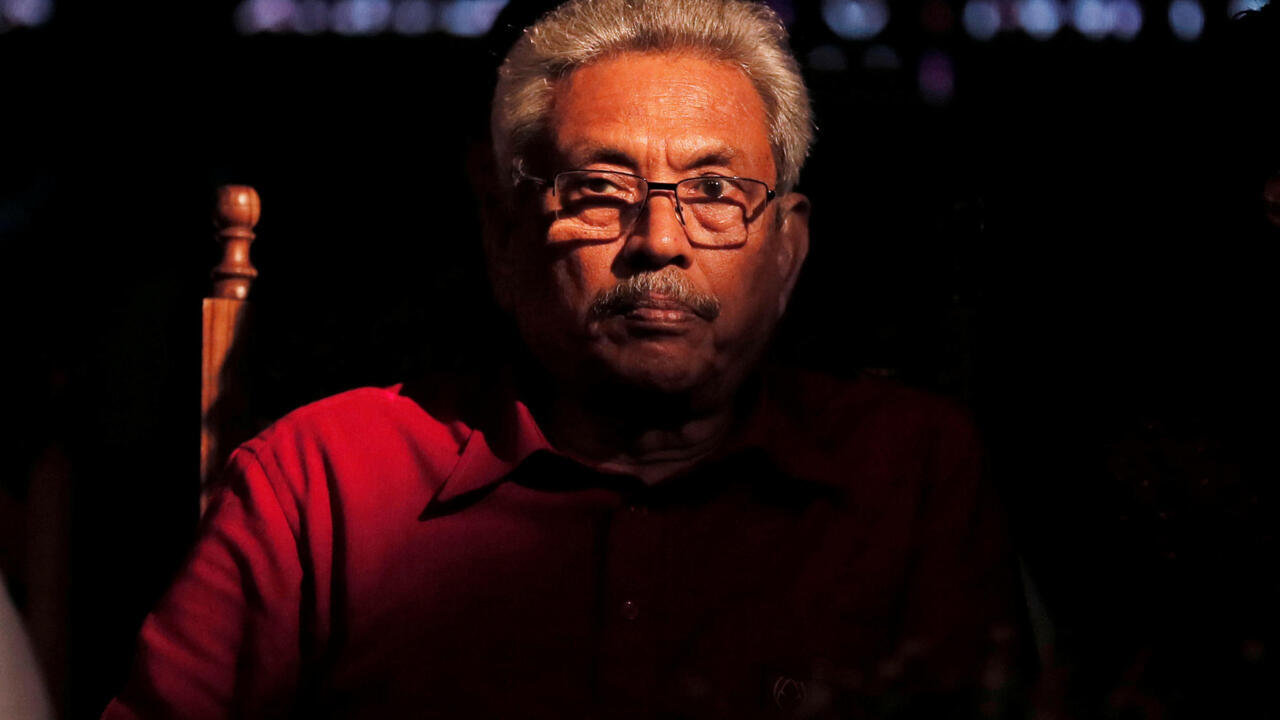
Harini rejects ex-Presidents
Meanwhile, a statement made by Prime Minister Harini Amarasuriya in Parliament on Friday (19) that the Government would not seek the support of former leaders who were involved in corruption through disasters in raising funds to rebuild the country following the recent disaster gathered criticism from Opposition parties. Several members of the Opposition claimed that the Government was agreeable to accept millions given by a former President but continued to insult them afterwards.
Amarasuriya had noted that the people and international communities had offered to support Sri Lanka due to the trust placed in the good governance practices of the incumbent Government and that it was better not to involve leaders who had lost public trust.
The Prime Minister had made these remarks in response to a statement by Opposition MP Rauff Hakeem that the Government must seek the support of former Presidents in appealing for international support in the recovery effort.
JVP General Secretary Tilvin Silva meanwhile had also made a similar statement while explaining the reason for the inflow of foreign assistance to aid in relief and rehabilitation work following the recent cyclone. He has said that foreign assistance was flowing in because of the international community’s firm belief that the JVP/NPP Government did not swindle funds.
According to him, assistance is flowing in significantly from other countries for the people affected by the natural disaster and aid will continue to flow in.
TPA writes to AKD
Meanwhile, Tamil Progressive Alliance (TPA) Leader Mano Ganesan has written to President AKD requesting a meeting to discuss the challenges faced by the Malaiyaha (up-country) community following Cyclone Ditwah.
Ganesan has noted: “At the outset, we wish to acknowledge and appreciate your decisive leadership during this exceptionally challenging period of national crisis.”
He has further stated that residents of the hill country, particularly the Districts of Kandy, Nuwara Eliya, Badulla, and Matale, as well as the surrounding areas, have been among the worst affected by the recent Ditwah disaster.
“The Malaiyaha community, which continues to register comparatively low and, in some sectors, negative human development indicators – especially in land ownership, housing, education, health, and poverty alleviation – requires a differentiated and targeted approach in the recovery and speeding up rebuilding phase.
“In this context, we respectfully request an urgent meeting with you involving political and civil representatives of the Malaiyaha community to deliberate on a coordinated and sustainable framework to address these unique challenges,” Ganesan has added.
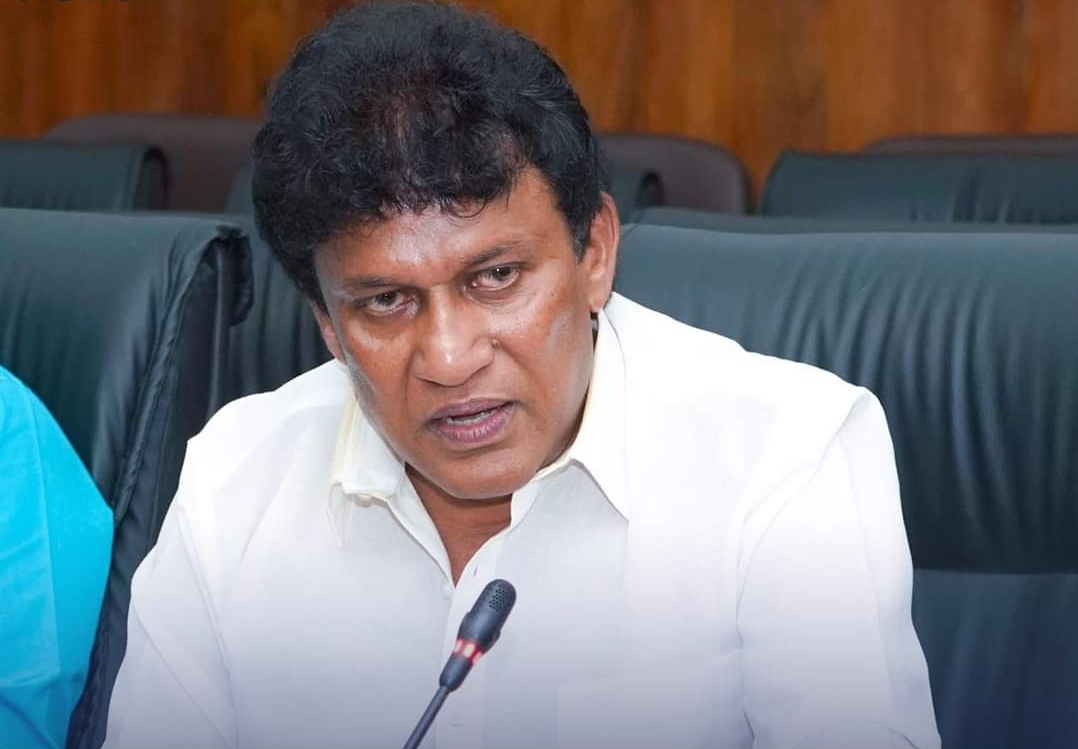
Udaya accuses AKD
Former Minister Udaya Gammanpila meanwhile has accused President AKD of criminal negligence over the recent disaster that claimed hundreds of lives and has threatened to pursue legal action once the President leaves office.
Gammanpila has claimed before the media that criminal charges will be filed against AKD after he completes his presidential term in 2029. “When you step down from the presidency in 2029, we will file criminal negligence cases against you without fail,” the former Minister has said, adding that evidence had already been gathered to support the allegations.
According to Gammanpila, the maximum penalty under the law for such an offence is five years’ imprisonment.
Harin’s prediction
Meanwhile, United National Party (UNP) Deputy General Secretary Harin Fernando, who stirred the pot at last month’s joint Opposition rally in Nugegoda by referring to the SLPP’s Namal Rajapaksa as the ‘Prince of the Stage,’ has this time around predicted yet another economic crisis in the country by April next year. He noted that Sri Lanka could face a major economic crisis by April 2026 if the fallout from the Cyclone Ditwah disaster was not managed properly.
“If there is no proper plan, programme, or projection, Sri Lanka will move towards a massive economic collapse by the Sinhala and Tamil New Year,” Fernando claimed at a media briefing in Colombo on Monday (15), adding: “Write down today’s date. We warned you.”
He further warned that it would be important to look at the positioning of the US Dollar against the Sri Lankan Rupee by 15 April and “look at what kind of economic contraction the country will face. I do not want that to happen, but it will if this situation is not managed properly.”

Losing LG budgets
Meanwhile, the ruling JVP/NPP that controls the Galle Municipal Council, which is one of the key Local Government (LG) bodies in the Southern Province, witnessed the defeat of its maiden budget on Monday (15) by two votes. The 36-member council had recorded 17 votes in favour of the budget and 19 votes against it.
The Opposition had objected to the 2026 budget presented by the ruling party, stating that there was not much of a difference between the latest proposals and those presented in last year’s budget.
Opposition councillors in the council had blown red balloons and burst them as a mark of protest while voting against the budget.
The JVP/NPP also lost the inaugural 2026 budget of the Balapitiya Pradeshiya Sabha on Tuesday (16). The budget was rejected by a narrow margin of one vote, with 17 councillors voting against it and 16 voting in favour.
Meanwhile, the JVP/NPP’s 2026 budgets were defeated in the Peliyagoda Urban Council and the Ratnapura Municipal Council. In Peliyagoda, eight JVP/NPP councillors had voted in favour of the budget while nine councillors representing all parties in the Opposition had voted against. In Ratnapura, the JVP/NPP’s budget had received 13 votes in favour and 14 votes against.
NPP MP criticises Minister
Meanwhile, trouble faced by the ruling JVP/NPP seems to now go beyond the defeats experienced by the party at many Local Government bodies, with an incident recently being reported of a ruling party MP criticising a Minister of the Government led by his own party.
The incident had taken place when JVP/NPP Kurunegala District MP Dharmapriya Dissanayake had criticised the conduct of the Trade Ministry under the purview of Minister Wasantha Samarasinghe over the destruction of a State-owned building in the Kurunegala area. He has noted that the destruction of the building had been carried out on land belonging to the Trade Ministry without any form of coordination. “This is just crazy. Although I’m an MP of the governing party, these incidents should not be allowed,” the MP has stated.
Dissanayake has claimed that he opposed the actions of the ministry since he did not approve of the destruction of State-owned buildings, especially without the knowledge of the divisional or district secretaries or even the grama niladhari. A video clip posted on social media shows him explaining the destruction caused to the building and even taking a telephone call to an official in a State institution under Samarasinghe’s purview.
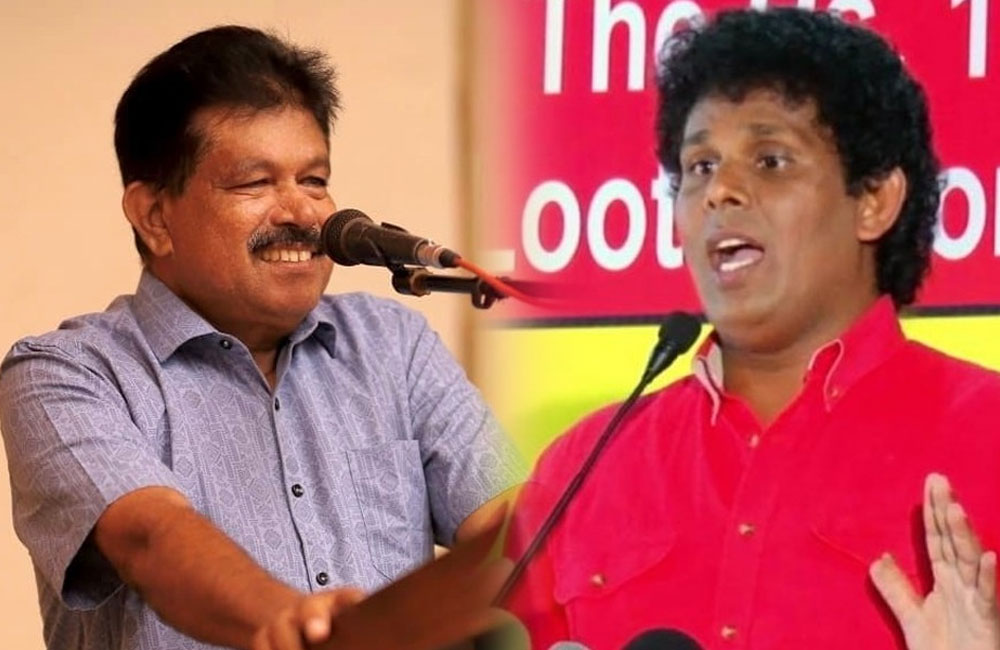
The de facto magistrate
While a JVP/NPP MP openly opposed and criticised the conduct of Minister Samarasinghe’s ministry, the ruling party’s Mayor of the Kaduwela Municipal Council Ranjan Jayalal seems to have assumed the role of de facto magistrate.
An audio recording of a person said to be Jayalal reprimanding a group of individuals including a lawyer who had met him to discuss some issues, claiming he was the Mayor and that he therefore possessed the powers of a magistrate, was shared on social media last Wednesday (17). The voice said to be of Jayalal is heard stating that no one can try to intimidate him since he is the de facto magistrate as the Mayor.
In the recording, it is also heard how the individuals who had arrived at the Mayor’s Office to resolve some issues are shouted at and chased out by the voice said to be Jayalal’s.
The Bar Association of Sri Lanka (BASL) meanwhile has issued a statement condemning Jayalal’s conduct, especially the way he had addressed a lawyer, and has urged the President to take action against the member of his party.
PSC for PCs
Amidst these developments, the Government continues to face pressure on holding the delayed Provincial Council (PC) Elections, especially with Opposition parties continuing to claim that the ruling party is delaying the polls due to the knowledge that it would be defeated when the elections are held.
However, it is learnt that the Government is looking at a proposal that has been submitted by the ruling party to appoint a PSC to study and make recommendations to the House on amendments required to be made to the electoral system for Provincial Councils in order to enable the holding of the delayed polls to the provinces.
The proposal presented by the Leader of the House has reportedly been included in the new Order Book that has been prepared following the conclusion of the Budget process.
The proposal has also stated that there needs to be a broader and in-depth discussion on the country’s electoral system and that this discussion should include topics like making female representation compulsory, youth representation, campaign finance limits, a mixed electoral system of first-past-the-post and proportional representation, the ability to cast early votes, and ensuring voting rights of migrant workers.
The report of the PSC is expected in three months from the first meeting of the committee or at the end of an extension period if such is granted by the House.
Addressing Parliament last week, Prime Minister Amarasuriya reiterated the Government’s commitment to hold the PC Elections as soon as the legal impediments to holding the polls were cleared, adding that the Government had already taken measures to allocate the necessary funds to hold the polls in next year’s Budget.
“The inability to hold PC Elections thus far is due to the fact that the delimitation process required under the provisions of the Provincial Councils Elections (Amendment) Act No.17 dated 2017 has not yet been completed. Accordingly, a study is currently being conducted to determine whether the elections should be held after completing the delimitation process, or whether amendments should be introduced to the provisions of Act No.17 of 2017 in order to proceed with the elections,” she said.
SJB proposal
While the Government talks of holding the delayed PC Polls next year, Opposition parties are continuing to explore the possibilities of forming broader alliances. The Samagi Jana Balawegaya (SJB) and the UNP are two of the main Opposition parties that are looking at forming an alliance by first working on a common work plan.
A team led by UNP Deputy Leader Ruwan Wijewardene was appointed by the UNP side to discuss an initial agreement between the two parties.
However, it is learnt that the SJB side has continuously called for an alliance between the two parties under a leadership other than that of UNP Leader, former President Ranil Wickremesinghe. When both parties, the SJB and UNP, decided to officially discuss entering a common work programme, SJB seniors had urged SJB Leader Premadasa that the leadership of an alliance with the UNP should be held by him (Premadasa) and that the UNP side in the new endeavour should be led by a party senior other than Wickremesinghe.
It is learnt that the SJB side has already communicated to the UNP side that an alliance between the SJB and UNP should be led by the SJB Leader since the party is the main Opposition in Parliament. In the event the two parties form an alliance under Premadasa’s leadership, Wickremesinghe would then have to resign from the UNP leadership and be appointed to a senior post like senior adviser or senior patron.

RW’s response
It is in such a backdrop that Wickremesinghe had stated last week at the UNP Management Committee meeting held at the Party Headquarters, Sirikotha, that he was prepared to step down from the party leadership to make way for the SJB-UNP alliance.
During the meeting, Wickremesinghe had asked for a progress report on the talks between the UNP and SJB, saying that he had not yet received an official report on the talks. He had also stressed to the Executive Committee that the discussions must be concluded swiftly as there was no time to waste, since from next year Opposition parties should unite to build a strong people’s force against the Government.
Wickremesinghe had then urged that the ongoing talks be expedited.
When the former President had been informed of the SJB’s proposals, he had told the committee that if a consensus was reached between the UNP and SJB to merge, and if the UNP Executive Committee proposed that Premadasa or another individual should take over leadership, he would have no objection since he supported the merger of the two parties.
“I have been the Party Leader for a long time. I became the country’s President. I have reached the highest position possible. At the most difficult moment for the country, I took responsibility and worked to lift it up. Therefore, stepping aside is not a problem for me. But this must be concluded quickly,” Wickremesinghe was quoted as telling the committee in media reports.
Soon after the meeting, pro-Wickremesinghe groups started to inform the media of Wickremesinghe’s preparedness to step down from the party leadership.
No takers
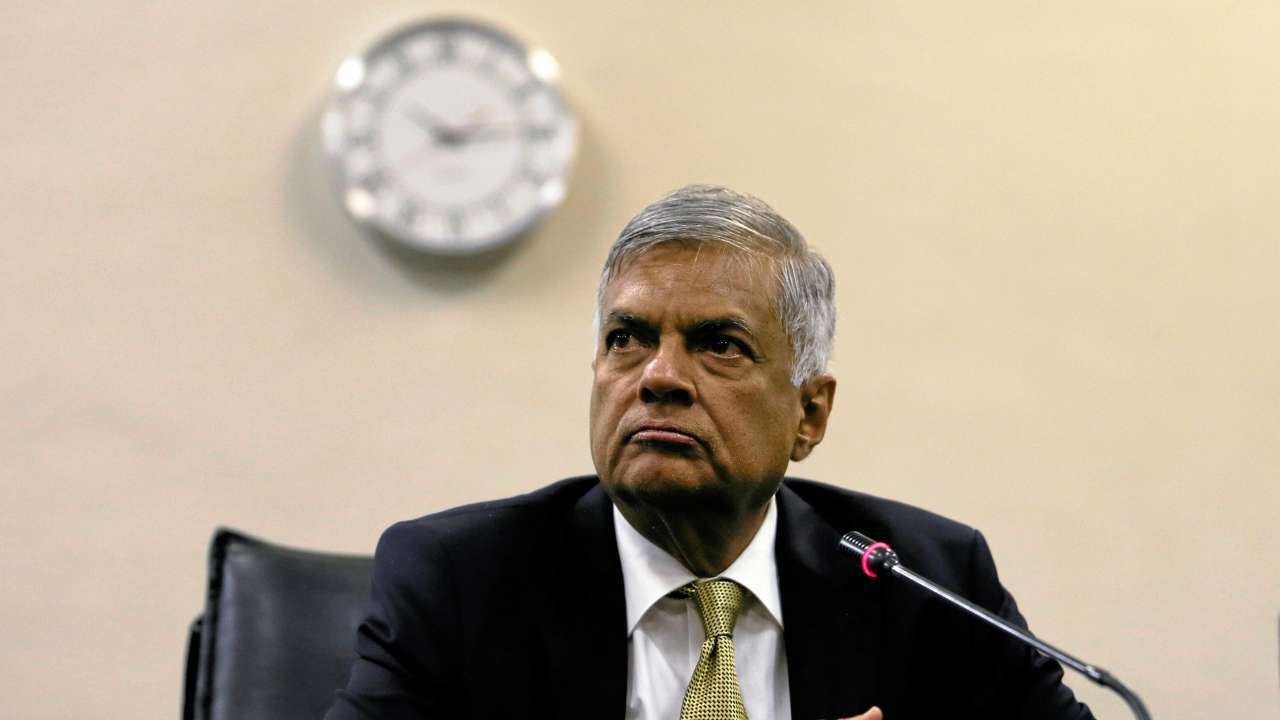
However, those who are well aware of Wickremesinghe’s antics know very well how he operates. This is not the first time he has expressed preparedness to step down from the party leadership.
Whenever there has been any dissension growing within the UNP in the past and currently as seen in the push for the UNP to align with the SJB as well as for a change in leadership, Wickremesinghe has stated he was either going to take a backseat to allow a fresh lead to be given to the party or that he was prepared to move out of the party leadership.
In every instance in the past when he has spoken of taking a backseat or moving out, he has initiated a two-pronged approach. The first is to put pressure on the other side, in this case the SJB, by making it public that he (Wickremesinghe) is supportive of the alliance and is prepared to even give up the UNP leadership. Through this move, the onus falls on the SJB to act on the statement.
The next move is to get his loyalists in the UNP to publicise Wickremesinghe’s magnanimous nature and to blame the SJB for delaying the process while another group of loyalists, especially two senior party members despised by a majority of UNPers, engage in internal processes to block the SJB from confidently forming the alliance.
Once these actions are put in motion, the SJB, realising that Wickremesinghe is back to his old antics, will become hesitant to align with the UNP, resulting in the former President’s loyalists then making public statements naming the SJB leadership as the truant.
All these moves would result in some SJBers, who are engaged in talks with the UNP and rooting for an alliance between the two parties, becoming disgruntled and Wickremesinghe will then get his loyalists to try and poach these SJBers to the UNP.
It is also no secret that Wickremesinghe, since 2022, has been sympathetic towards some SLPPers with whom the SJB has already expressed displeasure over potentially being aligned with, and is also comfortable working with these SLPPers. Wickremesinghe would work on getting these SLPPers to the UNP fold due to the belief that with the SJB and SLPP defectors, he could once again strengthen the UNP and rule the party for many more years to come.
Being a master in the policy of divide and rule, Wickremesinghe most often acts with an ulterior motive.
Therefore, the statement claimed to have been made by the former President about his preparedness to step down from the party leadership to pave the way for an alliance between the SJB and UNP was not taken seriously by many Opposition politicians, including many UNPers as well.
SLFP makes changes

Meanwhile, the Sri Lanka Freedom Party (SLFP), which is on a path to unite all divided factions and reform the party, has made significant changes to the party’s Constitution during a special meeting of its Executive Committee and All-Island Working Committee last Sunday (14) at the Party Headquarters on Darley Road in Colombo.
Party Leader, former Minister Nimal Siripala de Silva headed the meeting that was attended by all party seniors and members of the two key decision-making bodies.
Apart from endorsing several new appointments to key party positions, the party Constitution was also subjected to significant changes, which party seniors stated would further strengthen internal party democracy. A senior party member noted that while many political parties had party leaders with excessive powers who had decision-making powers mostly vested with them, the SLFP had decided to reduce the powers vested with the party leader.
Accordingly, the SLFP leader will no longer be vested with the power of removing a party member since such a move would now have to be made with the approval of the Politburo. While the party leader can appoint or remove a member of the party, it will now have to be done with the approval of the Politburo.
The other key change introduced was in relation to the appointment of members to the Politburo. Earlier, it was the party leader who had the power to appoint all 15 members of the SLFP Politburo. However, this has now been changed to permit the party leader to appoint seven members to the Politburo and that too should be done in consultation with the senior office bearers. The remaining eight members of the Politburo will be ex officio members like the general secretary, national organiser, treasurer, etc.
These changes to the party Constitution, it is learnt, are aimed at preventing the party leader from removing or expelling members who oppose the party leadership.
The SLFP has also reduced the minimum age for party membership from 18 years to 16 years.
New appointments
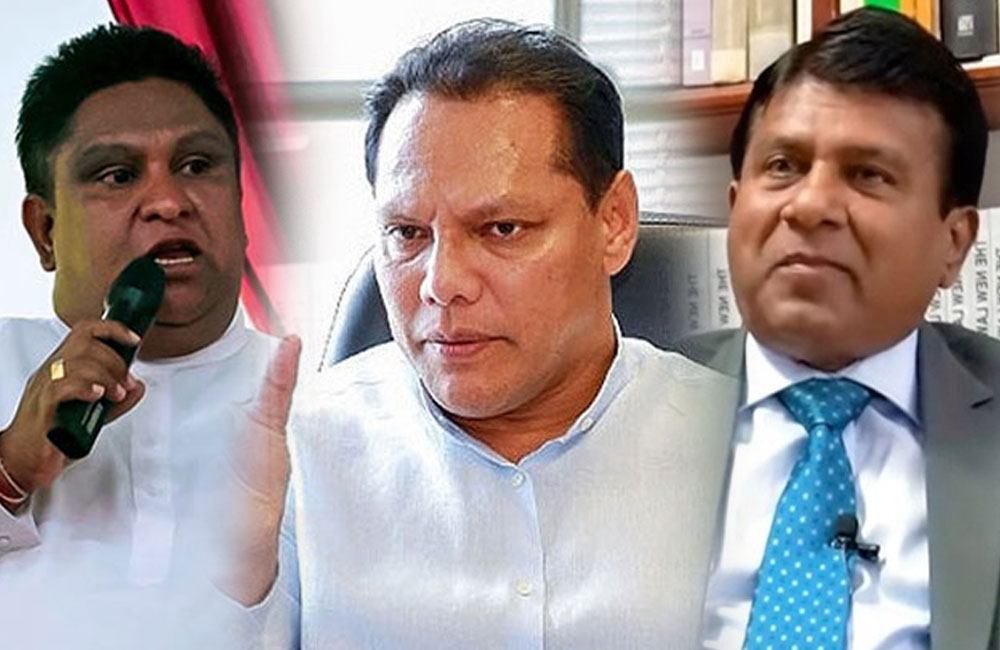
Meanwhile, Opposition MP Chamara Sampath Dasanayake was appointed as the SLFP National Organiser at last Sunday’s meeting.
The decision to appoint Dasanayake as the SLFP National Organiser was made at the party’s Executive Committee meeting held last Sunday (14). He was also appointed as the SLFP’s Parliamentary Leader.
The SLFP has been making appointments to key internal positions as part of the party’s reorganising programmes. Former Minister Wijeyadasa Rajapakshe, who joined the party recently, was also appointed to several key positions.
However, prior to appointing Dasanayake as the SLFP National Organiser, the post was offered to former General Secretary of the SLFP Dayasiri Jayasekara, who is currently in litigation challenging his ouster from the party post.
Dasanayake himself noted that the post of national organiser was first marked for Jayasekara and that he was appointed to the post since Jayasekara had declined it. Dasanayake also claimed that he had been appointed as the party’s Parliamentary Leader since Jayasekara represented the SJB in Parliament.
However, he further noted that he was prepared to move out of the national organiser post and make way for Jayasekara to assume the post if the latter decided to return to the party fold.
Dayasiri hits out
Jayasekeara meanwhile hit out at the meeting of the SLFP’s Executive Committee and the All-Island Working Committee by issuing a letter to SLFP members on an SLFP letterhead signed by him as the general secretary of the party.
Jayasekara has claimed in the letter that the meeting convened by Nimal Siripala de Silva and his group has violated the party Constitution yet again. He has also noted that the Election Commission did not accept the SLFP due to the ongoing legal cases.
Explaining further, Jayasekara has stated that the Election Commission would officially recognise the party only after the conclusion of the ongoing legal cases and upon the commission being informed of the final decision and the party’s stance. Until such time, Jayasekara has said that party members were being misled by one group through temporary moves.
Jayasekara has gone on to point out that the crisis in the SLFP had started when the 14 SLFP MPs in Parliament during the Gotabaya Rajapaksa administration had decided to resign from the Government in May 2022, as well as by nine of the SLFP MPs deciding to join the Ranil Wickremesinghe Government by assuming ministerial positions afterwards.
Referring to the statement made by Dasanayake that he (Jayasekara) was representing the SJB in Parliament, Jayasekara has clarified that he had not joined the SJB and that he had contested after reaching an agreement with the SJB-led alliance that he would contest under the alliance as a member of the SLFP and that SJB General Secretary Ranjith Madduma Bandara had accepted this and informed the Election Commission about it.
Jayasekara has also questioned how Dasanayake could be appointed as the Parliamentary Leader of the SLFP when he was given nominations by the General Secretary of the New Democratic Front (NDF) under the ‘gas cylinder’ symbol and not by the SLFP.
According to Jayasekara, the cases filed by him before the Colombo District Court challenging the allegedly illegal way in which he was removed from the post of party general secretary and the manner in which de Silva had assumed the post of party leader were up for their final verdict on Thursday (18).
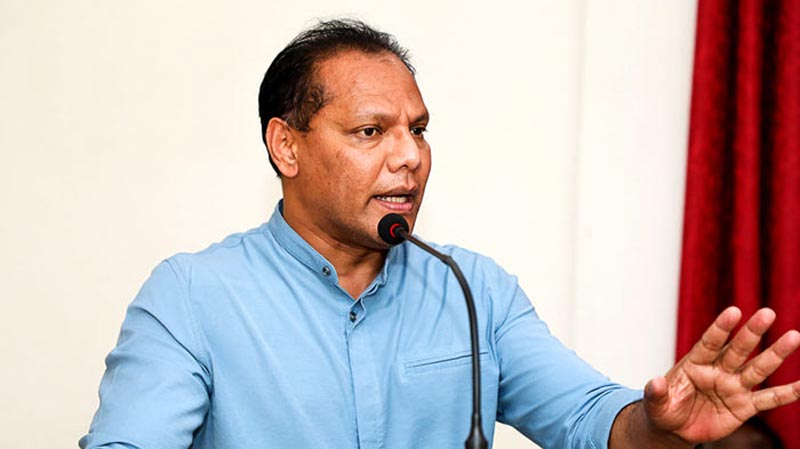
Displeasure over changes
It is also learnt that the latest changes being made within the SLFP have not gone down well with some party members, especially the SLFP member who had earlier led the party in the Colombo District.
The SLFP’s Faiszer Musthapha, PC also entered Parliament following the last Presidential Election through the NDF National List while Dasanayake was elected to the House from the Badulla District.
However, it is learnt that Musthapha is currently disgruntled that Rajapakshe has been appointed as the SLFP’s Colombo District Leader while Dasanayake has been appointed as the party’s Parliamentary Leader.
Maithri’s poetry
While the SLFP is travelling on a potholed path towards rebuilding the party following the many breakaways and factions, former Leader of the SLFP and former President Maithripala Sirisena was recently seen reciting a poem at the launch of a book of poetry in Colombo where he was the Chief Guest.
The poetry book contains poems about several former politicians. Former Prime Minister Dinesh Gunawardena had also attended the event.
When invited to address the gathering, Sirisena had gone to the podium and commenced his speech with a poem.
GL’s book
Meanwhile, former Minister G.L. Peiris is set to launch a book written by him – ‘The Sri Lanka Peace Process: An Inside View’ – containing details of the processes launched by several governments during the period of the war.
Peiris played a key role in the peace processes initiated by former President Chandrika Bandaranaike Kumaratunga (CBK) and former President Ranil Wickremesinghe as the Prime Minister of the 2001–2004 Government.
Meeting Namal

An interesting meeting had recently taken place between the SLPP’s Namal Rajapaksa and several JVP/NPP MPs. This meeting had taken place at the event organised to mark 52 years since the ordination of Ven. Kotapitiye Rahula Thera that was held at the Galgoda Purana Viharaya in Panadura.
Photographs of the event, especially ones where the ruling party MPs are seen exchanging pleasantries with Namal, were being widely shared on social media while some were reposted as memes. A video clip on lighting the ceremonial oil lamp at the outset of the event shows ruling party MP Nilanthi Kottahachchi awkwardly looking at Namal as he was standing next to her to light the oil lamp and she had to hand over the candle to him.
Former Speaker Karu Jayasuriya and former Minister Rajitha Senaratne were also among the attendees at the event.
However, the ruling party MPs had left the event prior to its conclusion.
MR returns to Colombo
Meanwhile, former President Mahinda Rajapaksa (MR) has returned to live in Colombo after spending several months at Carlton House in Tangalle, it is learnt.
It is further learnt that MR had arrived at the new residence in Colombo recently and had conducted the traditional rituals when moving into a new house, which is located in the Narahenpita area.
CIABOC after Arjuna

Meanwhile, the Commission to Investigate Allegations of Bribery or Corruption (CIABOC) last Monday (15) had informed court that it would arrest and produce former Minister Arjuna Ranatunga in connection with an ongoing investigation into an alleged financial loss of nearly Rs. 800 million to the Ceylon Petroleum Corporation (CPC).
Earlier that day, the CIABOC had arrested Ranatunga’s brother, Dhammika Ranatunga, who had served as Chairman of the CPC during the period under investigation.
According to the CIABOC, Dhammika has been named as a suspect in a case involving irregular fuel tenders awarded at inflated prices, which investigators allege caused significant losses to the State-owned petroleum entity.
However, as the week concluded, Arjuna was not arrested.
(Source - Themorning.lk)
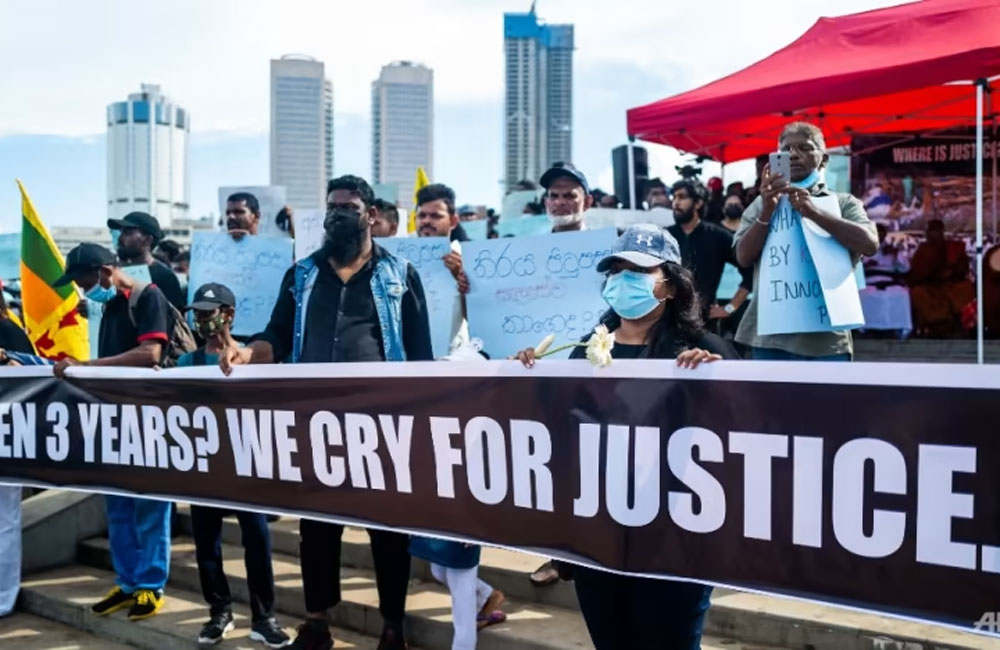
Let elusive mastermind to elude forever !
President Anura Kumara Dissanayake, in his recent remarks to Parliament, outlined how the government acted on specific intelligence to pre-empt what could have been a terrorist attack in Arugam Bay. He described how security authorities had received advance information about a potential plot targeting this internationally renowned tourist destination and convened urgent meetings—even at 1.00 a.m.—to make rapid decisions and deploy preventive measures. According to him, the government had also conducted early assessments of possible disruptions targeting key tourism zones and activated pre-emptive plans to avert instability.
These revelations reflect a broader shift in the country’s security posture. After the end of the war in May 2009, Sri Lanka gradually slipped into a sense of complacency. The defeat of the LTTE created the illusion that Sri Lanka was insulated from terrorism. That illusion shattered in April 2019 with the Easter Sunday bombings.

Since then, Sri Lanka has found itself compelled once again to adopt a more vigilant security stance. The increased presence of Israeli nationals among tourists in the country has emerged as a new consideration in assessing the threat environment. For the government, they are foreign nationals visiting Sri Lanka. Then, it is duty -bound to provide them security. Also, in case an act of terrorism is committed against them, it will deal a heavy blow to tourism which is the lifeline of cash-strapped Sri Lanka. Recent bombings in New Delhi and Islamabad have further shown that South Asia remains vulnerable to extremist violence.

In this context, Sri Lanka’s security mechanisms have been recalibrated to respond more swiftly to emerging threats. Ground intelligence has been strengthened, inter-agency coordination is being refined, and early-warning processes have been updated to avoid a repeat of the failures that contributed to the 2019 tragedy. The country’s tourism sector—critical to post-crisis economic revival—remains a central concern, given its high visibility and concentration of foreign visitors.
Following the Easter Sunday attacks, seven major committees and commissions examined the incident and issued reports, each assessing different aspects of responsibility, intelligence coordination and institutional failure. These include the Parliamentary Select Committee Report of October 23, 2019; the Presidential Commission of Inquiry (PCoI) Report issued on January 21, 2021; the Special Investigation Board Report by Justice Vijith Malalgoda dated June 10, 2019; the Commission of Inquiry into allegations raised in the Channel 4 Dispatches documentary, chaired by Justice Imam and released on June 25, 2024; the Commission of Inquiry into Intelligence Coordination and Investigative Processes, chaired by Retired Judge A.N.J. de Alwis and released on September 14, 2024; the Sectoral Oversight Committee on National Security Report of February 19, 2020; and the 2020 Federal Bureau of Investigation (FBI) Report.

A striking commonality across all these reports is the absence of any finding that points toward an “elusive mastermind” behind the attacks. Despite this, the narrative has gained traction within political and religious circles, most prominently through the continued assertions of Cardinal Malcolm Ranjith. While the call for accountability is legitimate, the persistence of a theory unsupported by evidence risks distorting public discourse and undermining faith in the conclusions of both domestic and international investigators.
Notably, the FBI’s contribution to Sri Lanka’s probe was internationally recognised. Their investigation, which included advanced digital forensics and cross-border intelligence tracing, received the award for the most outstanding international investigation. The distinction highlights the thoroughness of the global support extended to Sri Lanka and underscores the credibility of the analytical processes used.
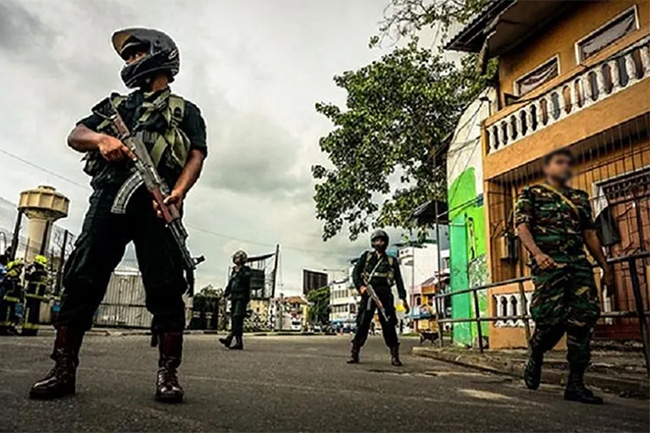
Despite this extensive body of authoritative findings, the digital age has made it increasingly easy for misinformation and politically motivated narratives to proliferate. Disinformation thrives in online echo chambers, where repetition often substitutes for evidence and emotional appeal overrides fact. Public understanding of security-related matters is therefore often shaped not by verified information but by competing political interpretations and sensationalised claims.
This presents a serious challenge. A nation that has endured one of the world’s most devastating terrorist attacks cannot afford to let public debate be guided by rumours or unsupported theories. The real security threats facing Sri Lanka today come not from mythical masterminds but from evolving regional extremism, digital radicalisation pathways, geopolitical spillovers and gaps in domestic intelligence coordination. Addressing these requires clarity, public trust in credible investigations and sustained policy attention—not a recycling of claims repeatedly rejected by formal inquiries.
(Source - Dailymirror)
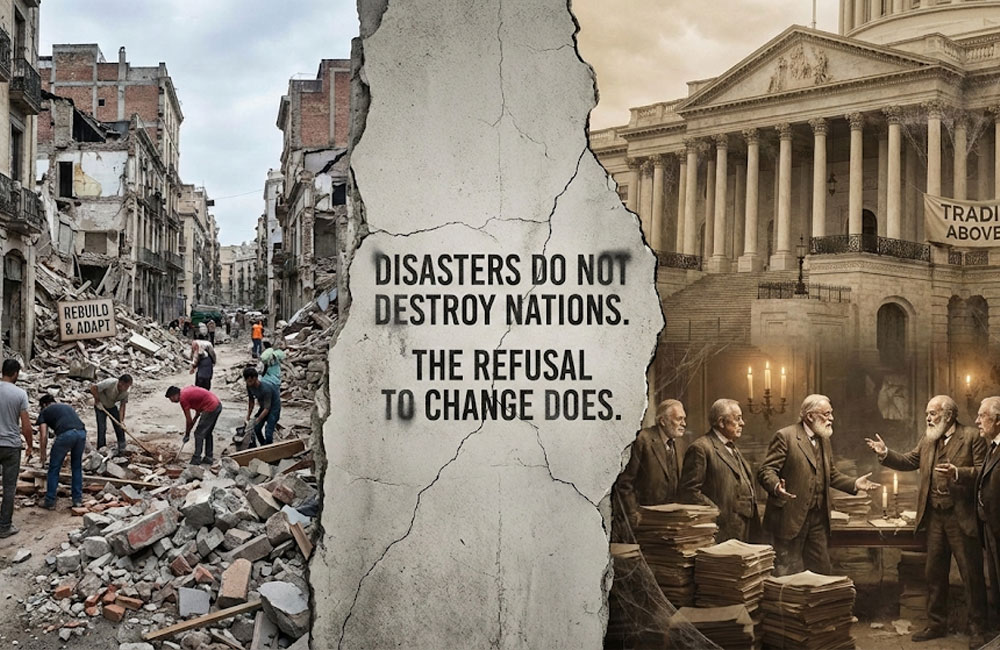
Disasters Do Not Destroy Nations. The Refusal to Change Does
Sri Lanka has endured both kinds of catastrophe that a nation can face, those caused by nature and those created by human hands. A thirty-year civil war tore apart the social fabric, deepening mistrust between communities and leaving lasting psychological wounds, particularly among those who lived through displacement, loss, and fear. The 2004 tsunami, by contrast, arrived without warning, erasing entire coastal communities within minutes and reminding us of our vulnerability to forces beyond human control.
These two disasters posed the same question in different forms: did we learn, and did we change? After the war ended, did we invest seriously in repairing relationships between Sinhalese and Tamil communities, or did we equate peace with silence and infrastructure alone? Were collective efforts made to heal trauma and restore dignity, or were psychological wounds left to be carried privately, generation after generation? After the tsunami, did we fundamentally rethink how and where we build, how we plan settlements, and how we prepare for future risks, or did we rebuild quickly, gratefully, and then forget?
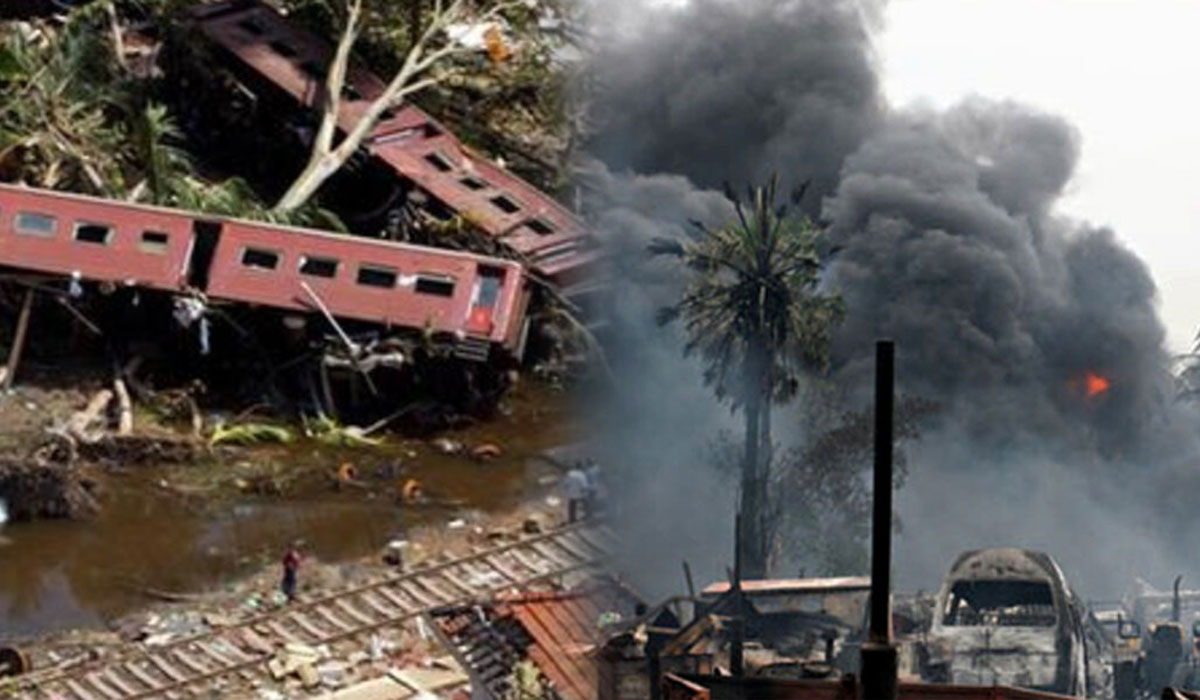
Years later, as Sri Lanka confronts economic collapse and climate-driven disasters, the uncomfortable truth emerges. we survived these catastrophes, but we did not allow them to transform us. Survival became the goal; change was postponed.
History offers rare moments when societies stand at a crossroads, able either to restore what was lost or to reimagine what could be built on stronger foundations. One such moment occurred in Lisbon in 1755. On 1 November 1755, Lisbon-one of the most prosperous cities in the world, was almost completely erased. A massive earthquake, estimated between magnitude 8.5 and 9.0, was followed by a tsunami and raging fires. Churches collapsed during Mass, tens of thousands died, and the royal court was left stunned. Clergy quickly declared the catastrophe a punishment from God, urging repentance rather than reconstruction.
One man refused to accept paralysis as destiny. Sebastião José de Carvalho e Melo, later known as the Marquês de Pombal, responded with cold clarity. His famous instruction, “Bury the dead and feed the living,” was not heartless; it was revolutionary. While others searched for divine meaning, Pombal focused on human responsibility. Relief efforts were organized immediately, disease was prevented, and plans for rebuilding began almost at once.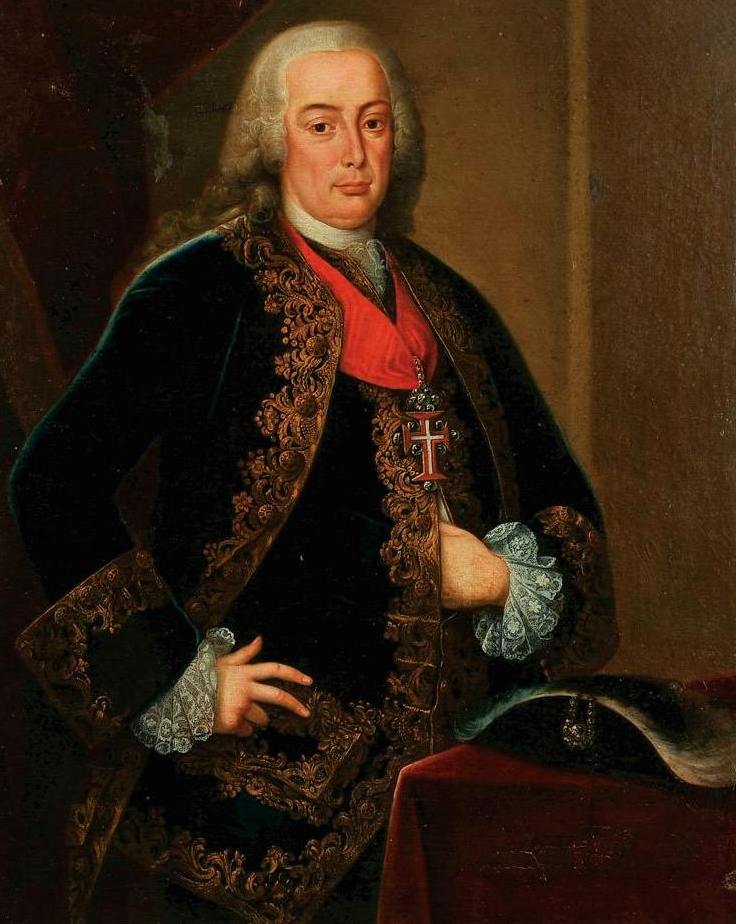 Sebastião José de Carvalho e Melo
Sebastião José de Carvalho e Melo
Pombal did not seek to restore medieval Lisbon. He saw its narrow streets and crumbling buildings as symbols of an outdated order. Under his leadership, Lisbon was rebuilt with wide avenues, rational urban planning, and some of the world’s earliest earthquake-resistant architecture. Moreover, his vision extended far beyond stone and mortar. He reformed trade, reduced dependence on colonial wealth, encouraged local industries, modernized education, and challenged the long-standing dominance of aristocracy and the Church. Lisbon became a living expression of Enlightenment values, reason, science, and progress.
Back in Sri Lanka, this failure is no longer a matter of opinion. it is documented evidence. An initial assessment by the United Nations Development Programme (UNDP) following Cyclone Ditwah revealed that more than half of those affected by flooding were already living in households facing multiple vulnerabilities before the cyclone struck, including unstable incomes, high debt, and limited capacity to cope with disasters (UNDP, 2025). The disaster did not create poverty; it magnified it. Physical damage was only the visible layer. Beneath it lay deep social and economic fragility, ensuring that for many communities, recovery would be slow, uneven, and uncertain.
The world today offers Sri Lanka another lesson Lisbon understood centuries ago: risk is systemic, and resilience cannot be improvised, it must be planned. Modern climate science shows that weather systems are deeply interconnected; rising ocean temperatures, changing wind patterns, and global emissions influence extreme weather far beyond their points of origin. Floods, landslides, and cyclones affecting Sri Lanka are no longer isolated events, but part of a broader climatic shift. Rebuilding without adapting construction methods, land-use planning, and infrastructure to these realities is not resilience, it is denial. In this context, resilience also depends on Sri Lanka’s willingness to learn from other countries, adopt proven technologies, and collaborate across borders, recognizing that effective solutions to global risks cannot be developed in isolation.
A deeper problem is how we respond to disasters: we often explain destruction without seriously asking why it happened or how it could have been prevented. Time and again, devastation is framed through religion, fate, karma, or divine will. While faith can bring comfort in moments of loss, it cannot replace responsibility, foresight, or reform. After major disasters, public attention often focuses on stories of isolated religious statues or buildings that remain undamaged, interpreted as signs of protection or blessing, while far less attention is paid to understanding environmental exposure, construction quality, and settlement planning, the factors that determine survival. Similarly, when a single house survives a landslide, it is often described as a miracle rather than an opportunity to study soil conditions, building practices, and land-use decisions. While such interpretations may provide emotional reassurance, they risk obscuring the scientific understanding needed to reduce future loss.
The lesson from Lisbon is clear: rebuilding a nation requires the courage to question tradition, the discipline to act rationally, and leadership willing to choose long-term progress over short-term comfort. Until Sri Lanka learns to rebuild not only roads and buildings, but relationships, institutions, and ways of thinking, we will remain a country trapped in recovery, never truly reborn.

Darshika Thejani Bulathwatta
Psychologist and Researcher
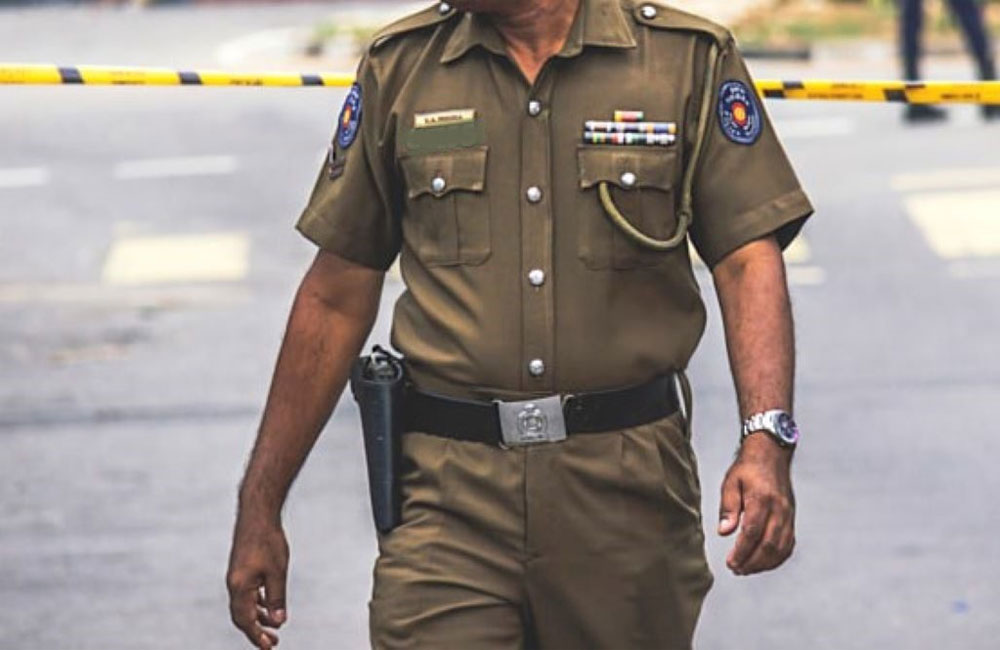
"Milcops" ignored in promised State Reforms
- Two cops including SI arrested over drug trafficking links (Reported – 18 April, 2024)
- Three Police Officers attached to Galenbidunuwewa Police Station convicted for all charges by Hon. High Court Judge Mr.Sampath Wijerathne for soliciting a bribe of Rs.20,000/- and accepting of a bribe of Rs.10,000/- (from CIABOC website)
- A PNB officer accused over drug trafficking arrested (Ministry of Defence /08 July 2020)
- IP Wasantha Kumara also attached to the PNB, wanted for involving in the alleged drug racket surrendered to the Kadawatha Police (Ministry of Defence /08 July 2020)
- Aluthkade shooting: Two cops arrested over the murder (Reported – 23 Feb.2025)
- IGP Priyantha Weerasuriya has lodged a complaint with the NPC and the CID against a Senior DIG on allegations of providing false information about the IGP and other senior officers to social media and sharing confidential internal documents with external parties. (Reported – 29 October, 2025)
"It is necessary to reform and modernise the State sector for efficient and quality service delivery. We showed our commitment for such in our first budget itself. State sector employee salaries have been increased in 03 phases by now" (translated from Sinhala speech) said President Anura Kumara Dissanayake to parliament on November 07 (2025) as the Minister of Finance, detailing his budget proposals for year 2026.
With more details on State sector salaries and pensions under budget proposal 33.1, he promised to establish a "Salaries and Pensions Commission" and explained, "It is our responsibility to manage the salaries and pensions policy in a sustainable manner. Considering salary anomalies occurred over the years and challenges in managing public finance, a Salaries and Pensions Commission will be established to provide solutions to problems related to salaries and pensions of public employees" (translated from Sinhala speech).
On two previous occasions, Minister of Public Security, Ananda Wijepala, spoke about a committee to design a separate salary framework for the police department. On 28 February 2025 he told parliament, "a separate salary structure for the Police Department will be established in next year’s (2026) budget". Speaking about salaries of police constables the Minister said, their monthly salary of Rs.29,540 would be increased to Rs.44,293 this year (2025) and in the budget for 2026 that would be further increased to Rs.46,921 with all related allowances also increased accordingly.
For the second time on 02 November, before the budget was presented in parliament, the Sunday Times quoted Minister Wijepala to the effect, police department will have their salaries increased by the 2026 Budget. In an article captioned "Coppers to get cash to buy boots and uniforms, no more problematic tenders" the Minister was quoted as saying, a committee has been appointed to design a separate salary framework for the police department, "similar to those of other armed forces" and had said, "…salary increases in the police department are implemented in line with general government salary revisions", implying police should not be treated as other public officers. For the perception now is the police are also part of "national security". A novel "Milcop" force, a hybrid of the military and the police.
While there was no mention by the President about salary increases for the Police nor about a committee on salaries for the police in his budget for 2026, what nevertheless remains problematic is the perception of Minister for Public Security assuming the police is an "armed force". This in fact is how most politicians and the public understand the "police force". Let me stress this first. Police Department is not an armed force and should not be. It is a "civil department".
Police department official website says, "In the year 1659 the Colombo Municipal Council adopted a resolution to appoint paid guards to protect the city by night.... Hence they could be considered as fore-runners of the police in the country." (https://www.police.lk/?page_id=211)
Police functions came to be clearly defined in 1805 when "safety, comfort and convenience of people" were added with prevention and detection of crime and maintenance of law and order.
Through many such changes and reforms, on the 1st of June 1947 Sir Richard Aluvihare, a career Civil Servant was appointed Inspector General of Police (IGP) before granting independence to Ceylon in February 1948. Police Department was listed with the Home Ministry, then under Minister Oliver Goonatilleke, who resigned in July 1948 and was replaced by Edwin Wijeyeratne as Minister.
Routine duties of the police then were guiding city traffic, arresting thieves, investigating robberies, raiding moonshine and illicit horse-betting centres apart from accepting complaints at the police station by citizens who had issues they wanted to be investigated. Police were called at times to control protests with a cane shield and a wooden baton. I have heard police used tear-gas against uncontrollable protesters and in very rare occasions, given orders to "shoot below the knee" when protests became aggressive and uncontrollable.
In those decades of 50's and 60's, although the Public Securities Ordinance No. 25 of 1947 was available to enforce emergency powers, it was used only to stall work stoppage in the public sector, declaring services like health, electricity, food supply as "essential services". In 1958, Public Securities Ordinance was used for the first time to deploy the military to curb anti-Tamil mob violence. Emergency regulations then remained only for about a month.
It has to be stressed too, reason for extremely low numbers in crimes in society during the first 30 years after independence was not merely police efficiency. The economic model and the ideology that nurtured that economy had much to do with ethics and morals the society lived with. Thus during the first 30 year period, crimes like rape of women, kidnapping and abductions, contract killing, mass scale drug peddling, were almost totally absent. Extremely rare news reports that shocked and numbed society all through those years were murders of Adeleine Vitharana, Ranjanie cab owner's wife, Ambalangoda Dr. Kularatne's wife, rape and murder of JVP activist Premawathie Manamperi by an army officer and the twin-murder of Russel Ingram and Eunice Pieris known as "Murders at the Vicarage".
What changed the civil face and work of the police was the JVP insurrection of April '71. Political illiteracy of the JVP leadership and total absence of "common sense" led to attacks on police stations in Sinhala South to capture political power in a "single night". With due endorsement from the Opposition, the JVP insurgency provided enough excuses for the Bandaranayake government to brutally crush the youth rebellion. And it also gave the Bandaranayake government the right to use "Emergency Regulations" in deploying the military.
The '71 April insurrection had many "firsts". It was the first time the "ceremonial outfit" the military was perceived to be till then, was used for "counter terrorism". It was the first time the police was provided powers under "emergency regulations" to arrest, detain and hold a "suspect" in custody. It was also the first time, the parliament allowed continuous extensions of emergency powers for years. Most frightening of all "firsts" was the decision the government took in strengthening the police and the army with new and more weapons and "training on counter-terrorism", that labels its own citizens as "enemies" of the State.
The JVP insurgency also left a long 09 year period of emergency rule from 1971 to late 1980. This 09 year emergency was what changed the working psyche of the police in maintaining law and order. It gave them undue powers far beyond that of policing a civil society. A legal right to arrest and detain anyone purely on "suspicion" and the provision for long periods of detention made the police a powerful factor in social life. The right to exercise such powers creates a mindset different to that of maintaining "law and order" in a civil society, under ordinary civil law. Another deformation was that of police officers used to working with emergency regulations, becoming mentors of junior police personnel recruited and trained under them. They were deployed on duty with emergency regulations.
When in 1979, President Jayawardene enforced the Prevention of Terrorism Act (Temporary) it provided all powers they were used to under emergency regulations and more. Three years later in 1982 it was made permanent and the initial explanation it was specifically to meet the threat of Tamil "terrorism" in North-East, came to be ignored. Yet the longest period in Sri Lankan history under emergency rule was also with the PTA in force from 1983 to August 2011, two years after the war was declared over. All these decades, police department was moved around and was under the Ministry of Defence, and then under the newly created Ministry of Internal Affairs. Whatever the ministry, the police came to be treated as an auxiliary force of the military.
Whatever the ministry the police department is left under, we are now with a police department that does not know what ordinary civil law is, and is mentally attuned to work and behave as a militarised police force. They become more troublesome and problematic when they become part of a heavily corrupt and politicised State.
To bring this to a close, let me say, we have now come to a stage where State Reforms are far heavier a priority than the economy and that restructuring and redefining the responsibilities of the police department as a civil department is right at the top of State reforms.
2025 November 17

Sri Lanka: Protection of the State from Terrorism Act, No. of 2026: Observations from an information integrity perspective
From the primary perspective of the integrity of information, and privileged communications, this bill’s forward presentation as a human rights improvement on the PTA obscures the reality that its core architecture, ranging from administrative detention, military powers, proscription regimes, and broad speech offences, replicates the essential features that made the PTA objectionable.
Posted online four days ago, the bill is open to public input for a month.
As journalist S. Rubatheesan wrote in the Sunday Times3, “Under the proposed Terrorism Act, those who commit an act of terrorism will be handed hefty penalties ranging from a twenty-year jail term with fines to life imprisonment after a High Court trial. The new law titled “Protection of the State from Terrorism Act, No. of 2026″ has been published by the Ministry of Justice and National Integration and will replace the current Prevention of Terrorism Act (PTA).”
General concerns
Oversight limitations
Section 78 defines “confidential information” to include information about the “functions, movements, or whereabouts of a specified person,” conduct of investigations, and “any secret code, word, password or encryption detail relating to national security.” Gathering or supplying such information with knowledge it could be used for terrorism is criminalised under section 8(2).
This definition of “confidential information” is overbroad, and likely by design (which is problematic). Information about the “functions, movements, or whereabouts of a specified person” could be interpreted to encompass social media posts documenting military checkpoints in the north and east, photographs showing troop deployments in the face of civilian protests, or even tweets noting the presence of intelligence personnel at public events. Tamil civil society organisations have long used social media platforms to document militarisation in their communities. These activities that could now constitute gathering confidential information.
The inclusion of information about “the conduct of any official activity, including any law enforcement or military measure which is intended to be carried out or is being carried out, or has been carried out” extends the definition to cover essentially any reporting on security operations. A Facebook post describing a police raid, a WhatsApp message warning neighbours about an ongoing cordon-and-search operation, or YouTube video documenting an arrest could all involve confidential information under this definition. The criminalisation under section 8(2) requires only that the person “knowingly or having reasonable grounds to believe” the information could be used for terrorism.
The reference to “secret code, word, password or encryption detail relating to national security” creates particular problems for encrypted communications. This language in the draft appears designed to capture not just sovereign encrypted communications, and related architectures4 but potentially any encryption that security agencies wish to access. If investigators claim that a suspect’s encrypted communications relate to national security, the encryption keys themselves become “confidential information” and anyone who possesses or transmits them faces potential liability. This provision works in tandem with section 55’s decryption orders, creating both a compulsion mechanism and a criminal offence framework around encrypted communications.
The reporting obligation
Section 15 criminalises failure to report information about terrorism offences, with penalties of up to seven years imprisonment. This provision places journalists, lawyers, doctors, religious figures, and community workers in impossible positions. A journalist who learns of alleged militant activity during an investigation, a lawyer who receives confidential information from a client or a priest who hears something in confession would face criminal liability for not immediately informing police.
Social media platform administrators, moderators of online forums, and administrators of messaging groups could face liability if they become aware of content that might relate to terrorism offences and fail to report it. A moderator of a Tamil diaspora Facebook group who sees posts that could be interpreted as supporting a proscribed organisation faces a choice between reporting community members to police or risking seven years imprisonment. The chilling effect on online community spaces would be substantial.
Journalists who receive information through encrypted channels face particular exposure. An investigative journalist using Signal or WhatsApp to communicate with sources in the north and east might learn of activities that could constitute offences under this Act, perhaps information about individuals who formerly had LTTE connections, or about community members who have expressed support for Tamil political causes that the government considers impermissible. The journalist’s failure to report this information to police would itself be criminal, regardless of source protection principles.
The provision also threatens the security of encrypted communications indirectly. If individuals know that anyone who becomes aware of certain information must report it, they will be reluctant to share sensitive material even through encrypted apps, and channels. E2EE protects the communication in transit, but cannot protect against a recipient who faces criminal liability for not forwarding the content to authorities. This creates a massive surveillance, and chilling effect without requiring any technical interception. The Protection of the State from Terrorism Act, No. of 2026 essentially, and incredibly conscripts recipients themselves as informants.
Lawyers, and especially criminal lawyers will face significant challenges. A lawyer in Jaffna whose client communicates via encrypted messaging about past associations with Tamil militant groups must either breach attorney-client privilege by reporting to police or face prosecution for failing to provide information. The “reasonable excuse” defence places the burden on the lawyer to prove that professional confidentiality constitutes a reasonable excuse. Given that Protection of the State from Terrorism Act, No. of 2026 explicitly overrides other written laws under section 74 (The provisions of this Act shall have effect notwithstanding anything contained in any other written law, and in the event of any conflict or inconsistency between the provisions of this Act and such other written law, the provisions of this Act shall prevail”), this is a very high burden of proof that lawyers, through no fault of their own, and for merely rendering legal services or advice, have to accommodate.
Military powers over civilians
The extension of police powers to military personnel under section 19 has direct implications for digital communications and devices. All powers of search and seizure that police possess now vest equally in armed forces members. This includes powers under section 20 to “take into custody any document, thing or article” connected with offences under the Act, language that encompasses mobile phones, laptops, storage devices, and any medium containing digital communications. A soldier who seizes a mobile phone at a checkpoint in Mullaitivu operates outside any civilian oversight framework. The new law’s 24-hour window before handover to police under section 24 creates a period during which military personnel, including through duress, and potentially even torture could access device contents, copy data, or extract information without any procedural safeguards.
For E2EE, this creates serious risks. Military personnel could coerce detainees to unlock devices or provide passwords during the handover period, before any judicial oversight comes into play. Given documented patterns of abuse during military detention, asymmetrically impacting Tamils, and Tamil speaking peoples including Muslims, the risk that this coercion may involve torture is not theoretical. It is established fact. Material obtained during this crucial window, including, potentially, the contents of encrypted messaging applications, could then inform subsequent investigation even if not formally admitted as evidence. There’s also the potential for devices of suspects to be targeted with spyware, creating long-tail surveillance risks, and surveillance trails even after the subject has been released.
The intersection with section 55’s decryption powers is also significant. Section 55 requires a magistrate’s order for compelled decryption, but nothing prevents military personnel from obtaining passwords or biometric access during the initial detention period. By the time a suspect is produced before a magistrate, their encrypted communications may already have been accessed without any judicial authorisation.
Tamil diaspora communities could be potentially impacted as well. Many maintain active social media connections with family and friends in Sri Lanka, sharing news about community events, documenting ground conditions, discussing political developments, and publishing content memorialising war time events, including around enforced disappearances. Under the draft law, a Tamil diaspora activist in say New York who shares vital, granular information received via WhatsApp from friends or relatives in Jaffna around the military’s targeting of memorialisation events7 or the on-going instrumentalisation of the existing PTA to target Tamil journalists covering mass graves could potentially be committing offences under Sri Lankan law, that section 2(c) explicitly extends to citizens resident outside Sri Lanka (i.e., even dual citizens).
Impact on information integrity, and privileged communications
Section 55: Core surveillance and decryption powers
This section grants magistrates authority to order the unlocking of encrypted communications and to authorise interception of electronic communications. The scope extends to postal messages, electronic mail, telephone conversations, voice communications, internet exchanges, video conferences, and “any communication through any other medium.” It also permits access to “any analogue or digital data or information exchange or transfer system.” The breadth of this language appears designed to capture all forms of digital, and online communications, including those protected by end-to-end encryption.
Related sections affecting online communications
Section 3(2)(h) and (j) criminalise interference with electronic systems, computerised networks, cyber environments, domains assigned to Sri Lanka, and “electronic, analogue, digital or other wire-linked or wireless transmission system[s].” These provisions establish the underlying offences that sections like 55 would be used to investigate.
Section 9 on encouragement of terrorism applies to anyone who “publishes or causes to be published any statement, or speaks any word or words, or makes any sign or visible representation” with intent to encourage terrorism. The recklessness standard in subsection (3) lowers the threshold considerably, one need not intend encouragement, merely be reckless as to whether encouragement occurs.
Section 10 specifically addresses dissemination of terrorist publications and explicitly covers electronic transmission. Subsection (1)(e) criminalises transmitting contents of terrorist publications, whilst subsection (2)(e) specifies “transmits the contents of a terrorist publication electronically.” Subsection (1)(d) captures those who “provide a service to others that enables them to obtain, read, listen to or look at a terrorist publication”, language that could potentially implicate ISPs (like Dialog), platforms (like Facebook), hosting services (like Google Drive), or even individuals sharing links.
Section 11 defines the scope of “statement or publication” for sections 9 and 10 to include “internet,” “electronic media,” and “other form of public notice or dissemination.” This definition confirms that online commentary, social media posts, and digital content fall within these offences.
Section 53 grants investigative access to telecommunications, satellite, digital service, and data service providers. Police may obtain orders requiring disclosure of information about services provided, data stored or archived, and records of uploading or downloading. This provision operates alongside section 55 but targets service providers rather than encrypted content directly. For example, Starlink services in Sri Lanka were recently only enabled after data interception capabilities were ensured9. This can be read as a measure that prefigured the publication of the Protection of the State from
Terrorism Act, No. of 2026 draft, and is clearly enabled by it.
Implications for E2EE communications
Section 55(1)(a) specifically addresses encryption by authorising orders “directing any person who provides locking or encryption services pertaining to any communication or storage services or equipment for any data or information or other thing, to unlock or unencrypt the service or equipment and provide information contained therein.” This language raises significant concerns for E2EE platforms where the provider may not possess decryption keys by design. The bill assumes technical capability that doesn’t exist with some, leading, strong E2EE implementations, and apps (like the Signal or Session apps for example).
Very limited guardrails
Section 11(1) provides exceptions for content “published in good faith with due diligence for the benefit of the public or in the national interest” and “opinion, legitimate criticism, satire, parody, caution or imputation made in good faith.” These carve-outs offer some protection for journalistic and political speech, though “good faith” remains undefined, and subject to partisan, political, prosecutorial and judicial interpretation, especially given Sri Lanka’s history of judicial, and institutional capture.
The bill requires magisterial approval for most surveillance powers under section 55, and ex parte applications may be heard in camera. However, the threshold for obtaining such orders (“reasonable grounds to suspect”) is low, potentially leading to loose, and wide application (arguably, and as noted earlier, asymmetrically implicating, and injuriously impacting minority communities, especially in the North, and East).
By Dr Sanjana Hattotuwa

Our Tribute to Mr. Kathir Ravichandra
A Leader, a Bridge-Builder, and a True Friend

It is with profound sorrow that we mark the passing of our dear friend, Mr. Kathir Ravichandra (Ravi), who left us on the morning of November 11 in Sydney, Australia, after a long battle with illness. His departure leaves a deep void in the hearts of all who knew him, a void that can only be filled by the memory of his grace, intellect, and unwavering commitment to his community.
Ravi and I shared a deep understanding of the struggles faced by the Tamil-speaking people of Sri Lanka since independence. I vividly recall the tragic events of July 1983: the violence, the fear, the injustice of the anti-Tamil pogrom. Ravi’s family, like so many others, bore immense suffering simply because of their ethnicity.
He migrated to Australia in 1982, carrying with him both the pain of loss and the determination to rebuild a life defined not by grievance, but by purpose. When I later moved to Canberra, Ravi was already a respected senior engineer with the ACT Government, later serving in the Federal Public Service. Beyond his professional accomplishments, he was an inspiring presence within the Tamil diaspora, one of the founding figures behind the Canberra Tamil Association, a platform that gave voice to Tamil Australians.
“He turned pain into purpose, and purpose into service.”
We had our differences of opinion, mine rooted in class-based politics, his in identity, but those differences never diminished our friendship. On the contrary, they enriched it. Ravi’s conservative upbringing and my socialist views often led to spirited debates, yet our mutual respect remained unshaken. We were, above all, bound by a shared hope for justice and peace in Sri Lanka.
Tensions had arisen within the Australia Sri Lanka Association (ASLA), as Tamil members sought recognition of the July 1983 atrocities, a request that was regrettably refused. Many Tamils, feeling unheard, left to form their own association, the Canberra Tamil Association (CTA). When peace talks between the Sri Lankan government and the Liberation Tigers of Tamil Eelam (LTTE), collapsed in April 1995, the reverberations were felt even in Australia.
It was during this time that conversations began, first at Mr. Mylvaganam Balasubramaniam’s home, then at Dr. Willie Senanayake’s, where about twenty Sinhala and Tamil expatriates gathered to imagine something new: how the diaspora community could assist formulating reconciliation measures by building a bridge across the ethnic divide. It was the seed of what became the Friends for Peace in Sri Lanka (FPSL), established later that year in Canberra.
The Forum’s mission was simple yet bold: to promote a just and lasting peace in Sri Lanka, acknowledging the legitimate aspirations of Tamil-speaking people while protecting the rights and security of all. We grounded our work in the principles of the United Nations Charter and international covenants on civil, political, and cultural rights.
Ravi joined us during those early years of the FPSL, when hopes were fragile and mistrust was rife. Many in the Tamil community viewed our cross-ethnic work with suspicion; yet Ravi persisted. Though he was closely connected to the LTTE-aligned Tamil lobby, he valued dialogue over dogma. He listened, questioned, and, more importantly, evolved.
His integrity and courage often placed him in difficult positions. On more than one occasion, Ravi’s cooperation with government officials or Sinhala colleagues drew criticism from hardliners. But he never allowed ideology to obscure humanity. For him, reconciliation was not a sign of weakness but an act of strength.
“He spoke with conviction, but also with compassion — and that made people listen.”
Together, we organised peace vigils, forums, and public meetings. One memorable event was the Peace Vigil of November 1995, attended by over a hundred Sinhalese, Tamil, Muslim, Burgher, and Australian participants — including diplomats and clergy. Ravi played a leading role in making it a success. Though some nationalists later accused us of celebrating the LTTE leader’s birthday (a coincidence none of us knew of at the time), Ravi handled the fallout with dignity and restraint.
In 1996, Ravi invited me to the “Peace with Justice” Conference in Canberra, co-organised by the Australasian Federation of Tamil Associations (AFTA) and the Australian Human Rights Foundation. Justice Marcus Einfeld was among the attendees. Ravi ensured that even the Sri Lankan High Commission received the conference papers, a small but significant gesture towards transparency and dialogue.
He was later elected Chairperson of AFTA, a role he fulfilled with humility and foresight. His belief in a political solution within a united Sri Lanka, one that respected Tamil identity and autonomy, set him apart. He saw federalism and devolution not as threats, but as pathways to coexistence.
I recall an incident in 1998 when Sri Lanka’s Minister of Housing and Construction, Mr. Indika Gunawardena, visited Canberra. Ravi, then a senior engineer, was scheduled to brief the Minister on ACT’s water and sewerage systems. The meeting was abruptly cancelled under political pressure from Colombo, simply because of Ravi’s Tamil identity.
Despite this humiliation, Ravi remained gracious. Later, when the Minister addressed a community meeting organised by FPSL and against the wishes of nationalist groups, Ravi attended respectfully. His conduct that day epitomised the quiet dignity with which he navigated life’s many contradictions.
Similarly, when Mr. Lakshman Kiriella and Foreign Minister Lakshman Kadirgamar visited Australia, Ravi continued to engage, even as the High Commission, under pressure from Sinhala extremists, sought to exclude him. He never retaliated in anger; instead, he held fast to dialogue and decency.
When Ravi first joined our efforts, he was an ardent supporter of Tamil Eelam. But through years of discussion and reflection, he came to see hope in a united Sri Lanka with devolved powers. This was not a renunciation of his Tamil identity — rather, it was an expansion of it. He believed that peace could only come when justice was shared and all communities were heard.
I recall his meeting with Mr. Anton Balasingham in London, where he tried to advocate this vision. He returned disillusioned — saddened that the LTTE leadership remained entrenched in the dream of separation. Yet even then, Ravi did not succumb to bitterness. He chose to work for unity, however distant it seemed.
Until I left Canberra in 2004, Ravi and I worked side by side — bound by friendship, purpose, and an unyielding hope for peace. When he later moved to Sydney, our contact became occasional but warm.
Two weeks before his passing, we spoke. Though gravely ill, Ravi’s voice carried the same optimism I had always known. He expressed his hope that the National People's Power (NPP) government would finally address the decades of Tamil suffering, paving the way for reconciliation and renewal. It was his final message of faith — in humanity, and in the possibility of a better Sri Lanka.
“Even in his final days, Ravi dreamed not of himself, but of peace for his people.”
Those of us who worked with him and many who only knew him by reputation will remember Ravi for his courage, diplomacy, and moral clarity. In times of deep division, he reached across boundaries that others dared not cross. He spoke softly but carried conviction. He believed that decency was the first step toward peace.
To his beloved wife Ranji, son Gajan, daughter Aalini, and all members of his family, we extend our heartfelt condolences at this time of bereavement.
Farewell, our dear friend. Your life was a bridge between peoples, between worlds, between what was and what might yet be.
You will be deeply missed and fondly remembered.
Lionel and Chitra Bopage, on behalf of the members of the Friends for Peace in Sri Lanka (FPSL) who associated with Ravi at the time
Dr Lionel Bopage
Melbourne, Australia – 13 November 2025
Sri Lanka’s President Speaks: Turmoil, Recovery and Diplomacy
In a candid conversation with Newsweek in the stately bilateral meeting room at the President’s Secretariat in Colombo, President Anura Kumara Dissanayake laid out the realities his nation faces in the wake of a devastating cyclone that left death and destruction in an already fragile economy.
He detailed how international partners, from regional neighbors to global powers, stepped in during the crisis, and why Colombo now sees an opening to reset ties with India, manage its complicated relationship with China and deepen engagement with the United States under President Donald Trump.
Here is a transcript of questions and answers from the interview.
Newsweek: Sri Lanka has undergone major political shifts in recent years, from protest movements to a dramatic change in the 2024 election. How do you explain the public mood that brought your government to power?
President Anura Kumara Dissanayake: The protests of 2022 were born not only from power cuts and long queues for fuel and medicine, but also from a deeper frustration with corruption, unequal opportunity and decisions made without transparency or accountability. By 2024, that public frustration had evolved into a democratic demand for a different kind of leadership. Our victory was a call for cleaner governance, economic fairness, and a break from politics as usual.
People wanted leaders who are like normal people, who would tell them the truth and accept responsibility. I see our mandate as a contract of trust—a covenant to stabilise the economy without abandoning the vulnerable, to reform institutions rather than capture them, and to prove that democracy in Sri Lanka can renew itself. We must show them that their faith was not in vain.

Newsweek: Sri Lanka sits at the crossroads of Chinese-built infrastructure, Indian regional influence and U.S. economic leverage. To what extent does Sri Lanka truly retain strategic autonomy, and how do you balance these relationships?
Dissanayake: India is Sri Lanka’s closest neighbour, separated by about 24 km of ocean. We have a civilizational connection with India. There is hardly any aspect of life in Sri Lanka that is not connected to India in some way or another. India has been the first responder whenever Sri Lanka has faced difficulty.
India is also our largest trading partner, our largest source of tourism and a significant investor in Sri Lanka. China is also a close and strategic partner. We have a long historic relationship—both at the state level and at a political party level. Our trade, investment and infrastructure partnership is very strong. The United States and Sri Lanka also have deep and multifaceted ties. The US is our largest market.
We also have shared democratic values and a commitment to a rules-based order. We don’t look at our relations with these important countries as balancing. Each of our relationships is important to us. We work with everyone, but always with a single purpose – a better world for Sri Lankans, in a better world for all.
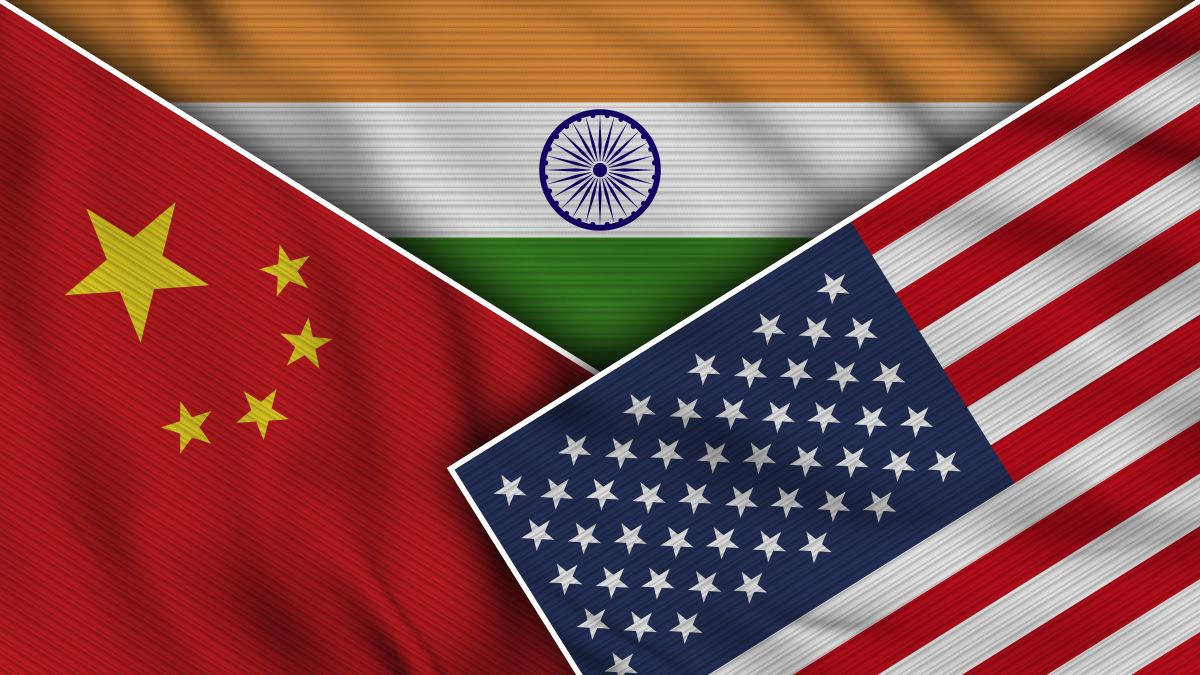
Newsweek: How do you see President Donald Trump’s presidency changing Sri Lanka’s place in the changing world order?
Dissanayake: For Sri Lanka, success means market access and renewed investment flows. We are engaging with President Trump’s administration to position Sri Lanka as a stable and reliable partner and an Indian Ocean hub.
Newsweek: What exactly does Sri Lanka want from Washington, and what is it willing to deliver in return?
Dissanayake: Market access for our exports, particularly textiles and value-added products. We also need climate finance – we just lost several billions of dollars due to Cyclone Ditwah. It will take us a few weeks to assess the actual damage. We need grants for climate adaptation: early warning systems, resilient infrastructure, coastal protection. We need technology and investments – we want US companies to invest in Sri Lanka in all possible sectors including digital infrastructure, manufacturing and renewable energy.
We need technology transfer. What we offer is a strategically placed, stable, democratic partner in the Indo-Pacific. We are committed to freedom of navigation. We are keen on port and logistics collaboration. We also look forward to deepening cooperation on shared concerns like maritime security collaboration, counter-terrorism and drug trafficking.

Newsweek: With public debt still hovering above 100% of GDP, how do you plan to address this and avoid another default while avoiding pain for the poorest?
Dissanayake: We just completed a historic debt restructuring process, only to face yet another disaster – Cyclone Ditwah. Initial estimates indicate that the damage may well be beyond any natural disaster that our island has endured. So we will have to service debt while simultaneously rebuilding from climate disasters. This is why debt sustainability frameworks for climate-vulnerable countries must change.
We are pursuing export-led growth to tackle decades-long weaknesses in our economy. We are increasing government revenue, broadening our tax base through digitalization and protecting social spending. Over 20,000 people lost their homes in Cyclone Ditwah. We cannot impose austerity on people who have lost everything. We are expanding targeted cash transfers, subsidizing essential medicine, investing in agricultural recovery and rebuilding homes, schools, hospitals and public infrastructure. We have to do this while operating within the IMF programme parameters. We need support from our partners and international organisations.
Newsweek: Sri Lanka posted 5% growth in 2024 and is targeting a 2.3% primary surplus in 2025. Within the IMF framework, what policy levers can deliver visible relief to low-income families in the next 12–18 months?
Dissanayake: Cyclone Ditwah just battered nearly two million people, with approximately 55,000 houses damaged and some completely destroyed. These families need immediate, visible relief. One – we will have to help build flood-resistant homes. This will create construction jobs while protecting families. Two – we lost about 273,000 acres of rice paddies. We have to provide seeds, equipment and technical support so that farmers can replant. We will need a lot of funding just for agriculture restoration. This is not just disaster recovery but food security as well. Third – we are maintaining subsidies where they matter most to poor families: medicine, fuel, basic food items. Fourth – infrastructure repair will create jobs.
Newsweek: Your government has recently subjected large-scale foreign investment proposals to fresh scrutiny. How will Sri Lanka convince foreign investors that it is a predictable place to commit capital?
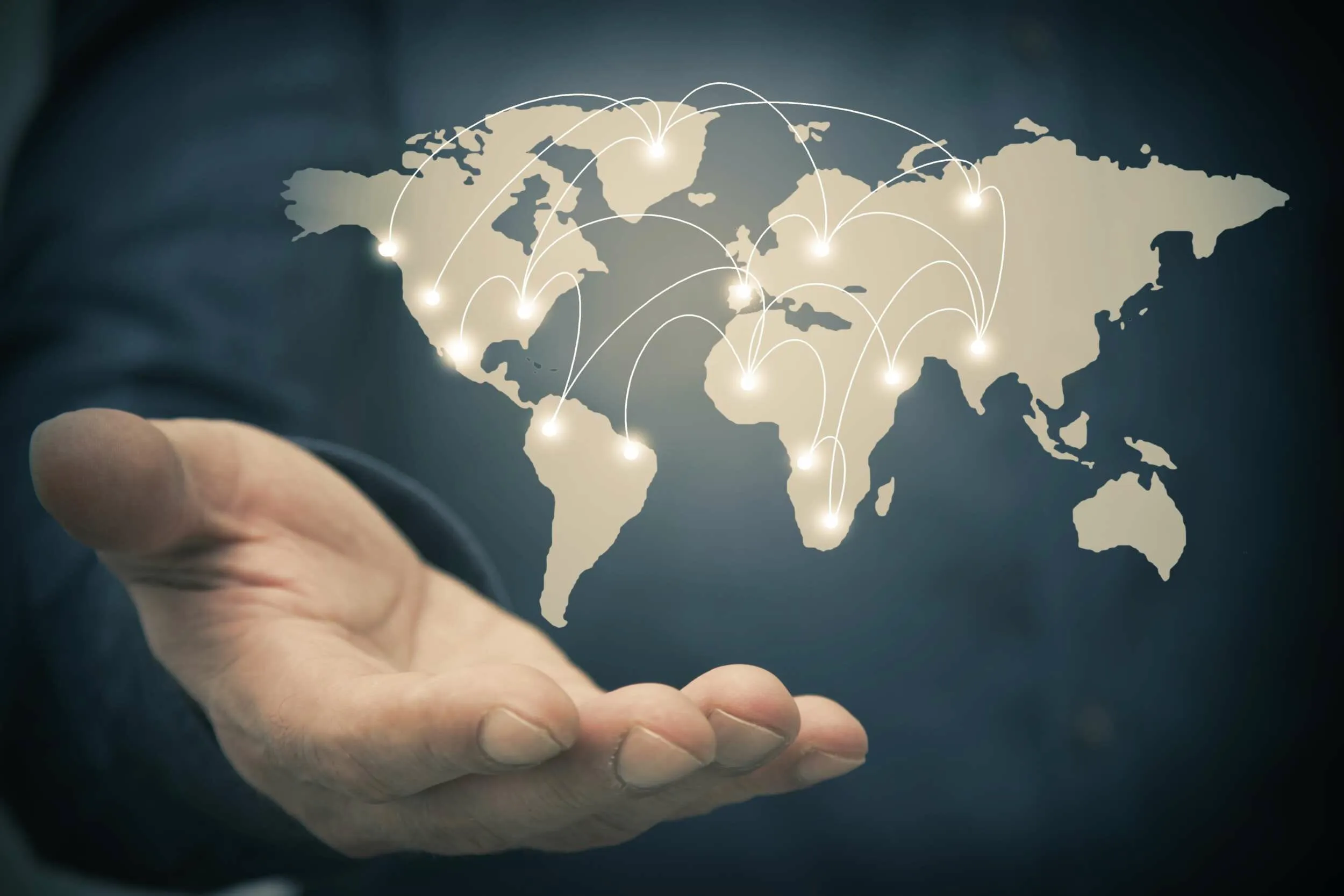
Dissanayake: We are establishing transparent, rules-based evaluation with clear criteria: environmental and climate resilience standards, economic viability, technology transfer and local capacity building, labour and social protection, and alignment with national development goals. Foreign investors want three things: clarity, consistency and confidence. We are creating a clean, predictable investment environment that protects both the investor and the interests of the Sri Lankan people. First, we have introduced a single-window investment approval system to reduce delays, eliminate hidden influence and provide a clear decision pathway.
Investors will be able to see the full process online, including timeframes, required documentation and responsible officials. In addition, we are drafting a new Investment Protection Act to guarantee fairness, legal certainty and enforceable rights for investors. Second, every large project will undergo transparent, rule-based evaluation. That means standardized tender procedures and pre-defined sustainability criteria. There will be no special treatment for insiders or politically connected groups, which is exactly what investors have long requested. Third, we are strengthening the legal and regulatory framework. Digital procurement systems, enforcing mandatory asset declarations and establishing independent oversight mechanisms are just a few of the measures we’re taking.
This ensures that approvals are made on merit, feasibility and national benefit, not personal networks. Finally, we are maintaining political stability and rule of law—the two strongest signals for investor confidence. A stable government aligned with long-term economic planning is far more attractive than a system with sudden policy changes or opaque decision-making. In short: Sri Lanka welcomes investment, but we want investment that is transparent, predictable and productive. When investors know the rules and trust that the rules will not suddenly change, they commit more capital, bring technology and create jobs. That is the environment we are building.
Newsweek: Given China’s long-term leases over Hambantota and Port City, do you see these as strategic risks Sri Lanka must manage?
Dissanayake: These projects are realities that we must manage intelligently. The Hambantota Port operates transparently, like any other port terminal in Sri Lanka. Our Navy and customs are in control. It serves Sri Lanka’s economic interests through job creation and regional development and doesn’t compromise our security. The lease is commercial, not military. We have been clear that no foreign military bases are permitted and we enforce it. Port City is primarily a commercial development. It will create jobs, attract investment and generate revenue. We have to monitor operations, ensure compliance with Sri Lankan law and maintain sovereignty over how these assets are used. The projects are realities that we must manage with a clear-eyed assessment of Sri Lanka’s interests—what serves Sri Lanka’s development. The recent floods and cyclone showed Sri Lanka remains unprepared for extreme weather.
Newsweek: How do you respond to criticisms of the government’s handling of the disaster?

Dissanayake: Cyclone Ditwah was catastrophic—lives lost, villages submerged, infrastructure torn apart. Response was rapid, with our forces and local authorities mobilised. Our partners stepped in as well. Although the priority at the moment is to work together and ensure Sri Lanka gets back on its feet, we need meaningful criticism to guide us. Longstanding weaknesses were visible in local preparedness, land-use enforcement and speed of relief delivery.
We are in government and we want to fix the problems. We have launched a comprehensive review of our disaster management systems. Sri Lanka’s pre-monitoring and early-warning systems must improve—especially real-time weather tracking and community alert mechanisms. We have established emergency operations centres in every affected district, deployed all available military and police resources for rescue and relief, and coordinated with international partners who responded rapidly.
We are creating a National Disaster Management Authority with real resources and authority. We will improve our forecasting through better radar coverage. We are pre-positioning rescue equipment and supplies in high-risk areas. We are mapping landslide-prone areas in the central highlands. Of course these districts have experienced landslides before. With climate change, destruction of this scale should have been expected in time. But for years and years Sri Lanka has failed to prepare adequately.
At least now, our government will work with all partners to put effective, efficient and accountable systems in place. We will rebuild Sri Lanka, better than it was before.

Newsweek: Is Sri Lanka trapped in a model where climate shocks keep setting the country back for years? What’s your long-term plan?
Dissanayake: We will be trapped if we don’t act now. This trap is not of our own making. Sri Lanka contributes negligibly to global emissions. But we face existential climate shocks that can destroy years of development progress overnight. But we must break this cycle. We can’t have every flood, every cyclone, every drought set us back to where we started. So we urge our partners to help us build an escape plan to get out of the trap.
Help us build climate-resilient infrastructure. This will cost more upfront but will save us from repeated reconstruction. Help us diversify our economy away from climate-vulnerable sectors to sectors like the digital economy, IT services, light manufacturing and climate-resilient industries. Share technology so that communities have time to evacuate and protect assets before disasters strike. Help us build natural climate-change mitigation infrastructure – mangrove restoration, reforestation and wetland conservation.
Newsweek: Who were the most reliable partners in the disaster response, and which countries will be indispensable to Sri Lanka’s future?
Dissanayake: So many countries came forward to support us. India responded the quickest with Operation Sagar Bandhu. They deployed aircraft, helicopters, naval vessels including aircraft carrier INS Vikrant, and National Disaster Response Force personnel. Our neighbours Pakistan and Maldives also provided invaluable support. We deeply appreciate their solidarity, as well as the solidarity extended to us by all our neighbours. We also remain deeply grateful to all other countries, international partners and individuals around the world who reached out and contributed. We will work with all partners – bilateral and multilateral – for infrastructure and economic development, and climate adaptation and technology. The honest answer is – we can’t afford to be dependent on any single partner. Our future depends on building and maintaining productive relationships with all partners who contribute to our nation’s sustainable development, growth and prosperity.

Newsweek: Sri Lanka retains sweeping powers under laws like the Prevention of Terrorism Act and restrictive online-safety legislation. What is your plan for these laws?
Dissanayake: These laws have been used as tools of repression. They are out of place in a democracy. We are committed to comprehensive reform. On the PTA, we are committed to repealing and replacing it with legislation that balances legitimate security concerns with civil liberties. This means ending indefinite detention, establishing judicial oversight for all detentions, protecting the right to legal counsel, and ensuring that anti-terrorism legislation meets international human rights standards. We are revising the Online Safety Act to protect free expression while addressing genuine harms like hate speech that incites violence and child exploitation.
The focus is to prevent real harm and not silence criticism. We want to work with civil society, international human rights experts and affected communities to draft replacement legislation. Bad laws rushed through will create new problems—we have experienced this in the past. Trust in government, both nationally and internationally, requires these reforms. We will act. And act soon.
Newsweek: How can rights-conscious partners trust Sri Lanka when its security laws resemble those of an illiberal state?
Dissanayake: Trust is earned through action. We have inherited what previous governments did. Changing that takes time. Rights-conscious partners should look at our actions – we are releasing political prisoners systematically, reviewing cases where people were detained under repressive laws without proper process, allowing space for peaceful protests and strengthening independent institutions – the judiciary, human rights commission, anti-corruption agencies. We are providing resources needed by these institutions and we are in the process of repealing and amending repressive laws. We are trying to dismantle systems that have been built over decades.
The political culture of control and institutional habits don’t change overnight. It requires sustained effort. Our partners should see whether we are moving in the right direction and whether our reforms are substantive. Also, whether we are backsliding or advancing. They should help us build accountable and rights-based systems. We are serious about building a rights-respecting democracy, and we urge everyone to support the process.
Newsweek: The UN High Commissioner for Human Rights recommended a dedicated judicial mechanism with an independent special counsel. How are you responding?
Dissanayake: Transitional justice for past rights violations is complex. Families deserve truth, accountability, justice and reparations. The nation requires reconciliation. We support accountability for past violations through a Sri Lankan-led process. We are currently working with victims’ groups, civil society organisations, local experts and international experts on what a credible domestic process should be.
Newsweek: Critics say the arrest of former president Ranil Wickremesinghe was politically motivated and no real steps are being taken against entrenched corruption. How do you respond?
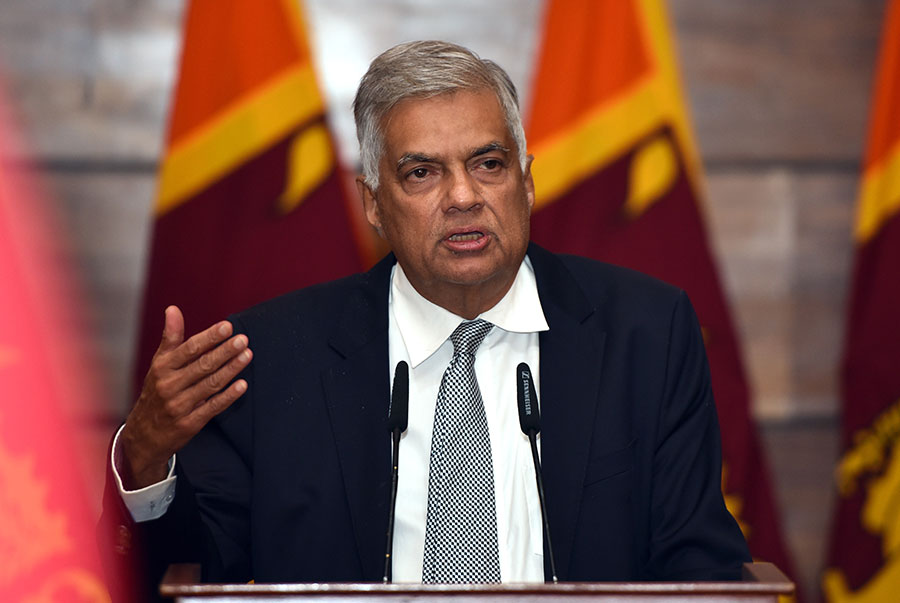
Dissanayake: Corruption investigations must be evidence-based and not politically motivated. If the evidence warrants prosecution, political status should not provide immunity. There should be no political interference in such matters. Whether Mr. Wickremesinghe’s arrest is justified depends on evidence, and that should be tested in court through proper process—not the media or political pressure.
On institutional corruption more broadly – yes, it seems as if we haven’t done enough yet. The reason it seems that way is because corruption is deeply entrenched in institutions, built over decades. This means that putting things right requires systemic change, not just arrests. We are strengthening anti-corruption agencies. The Commission to Investigate Allegations of Bribery or Corruption needs independence, resources and political backing. We are establishing transparency in procurement. Government contracts, particularly large infrastructure projects, must go through transparent, competitive processes.
We are digitalizing procurement to reduce opportunities for bribery. We are strengthening asset declaration and conflict-of-interest rules. We are pursuing major cases. We are establishing institutional reform that prevents future corruption and we are committed to creating a culture of accountability. We believe that credibility comes from process, not personalities. Justice in Sri Lanka must be governed by facts, evidence and due process—and that is exactly how we are operating.
We have also launched a five-year anti-corruption plan to strengthen these mechanisms, ensure continuity and make accountability a permanent feature of governance.
Newsweek: Over 300,000 Sri Lankans left for foreign employment in 2024. Youth joblessness is still above 20%. What reforms will convince a talented 25-year-old to stay?
Dissanayake: We must create a country where young people see a bright future full of opportunities, and this requires fundamental reform. In brief – meritocracy over connections; an entrepreneurship-friendly environment; competitive salaries and opportunities; quality education and skills training; pathways for returnees; livable cities and quality of life; climate resilience. We also want to create the regulatory frameworks and international partnerships necessary so that Sri Lanka’s economy is linked seamlessly with the global economy. This will expand the horizons of our people. The hard truth, however, is that even with all these reforms, some will still leave.
This is the reality in a globalized world. What we can do—and what we are committed to doing—is to create enough opportunities so that staying is a competitive choice and not a sacrifice. We also want to maintain strong connections with the Sri Lankan diaspora so that they contribute to Sri Lanka’s development and growth. A talented 25-year-old should stay because they believe they can build a successful career in Sri Lanka and contribute meaningfully to the country’s progress. That is what we are working to create—a stable, peaceful, reconciled and prosperous Sri Lanka where everyone can thrive.
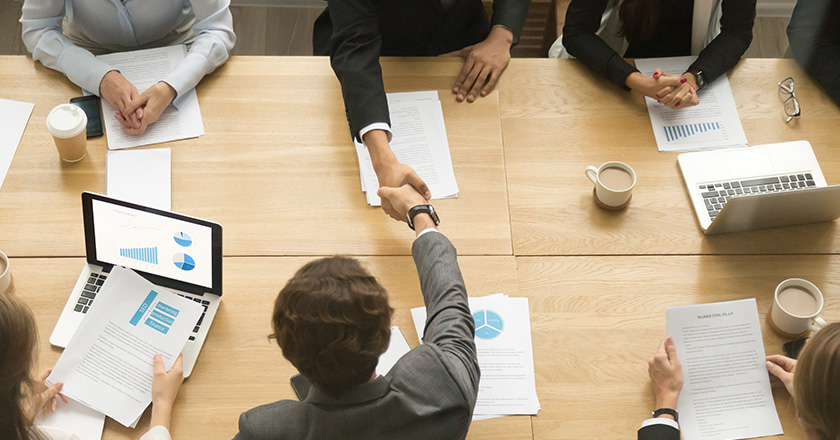
Newsweek: Do you think you can “overcome” everything bad that happened in your country’s past?
Dissanayake: No. It is important to be honest. You can’t overcome the loss of thousands of lives in conflict. You can’t overcome disappearances, torture, trauma of families and events in the past that scarred generations. You can’t overcome the suffering incurred by economic mismanagement and collapse. You can’t overcome death and tragedy. What we can do, and what we must do, is to ensure that these horrors that happened in the past do not recur. That they are never repeated. The pain of people who lost loved ones will not disappear just because there is a new government or a new law.
The best we can do is acknowledge that pain exists and ensure that it wasn’t in vain by making sure that things like this don’t happen again. Overcoming suggests that we can move past and forget. We can’t erase the past. We can’t forget the past. We have to acknowledge the past and make those memories and painful experiences drive us to ensure non-recurrence and build a better, more inclusive nation. The question, to my mind, is not whether we can overcome something bad but whether we can break the cycles that produced those painful experiences. Whether we can build institutions that protect everyone regardless of ethnicity, language or religion.
Can we ensure that political differences don’t lead to violence? Can we create a country where citizenship is equal and all communities feel that they belong equally? Can we create a country with strong institutions where everyone is accountable? I think that this is achievable. But it requires facing the past honestly, and not pretending to overcome it. It requires constitutional reform that protects minority rights and ensures equal citizenship. It requires empowering communities and protecting the vulnerable. It requires economic opportunity for all; it requires dignity for all.
We can’t overcome the past, but we can refuse to repeat the bad things by learning from the past and reforming so they don’t get passed on to future generations.

Newsweek: What is Sri Lanka’s biggest challenge right now?
Dissanayake: Our biggest challenge is achieving sustainable and equitable development while dealing with overlapping crises. We just completed historic debt restructuring – $25 billion restructured, $3 billion forgiven. But now we are confronted with a crisis beyond our control—Cyclone Ditwah has made our challenges even bigger. It’s almost as if when we are taking two steps forward, something beyond our control has pushed us back three steps. Yet our people have extraordinary resilience. Our debt is above 100% of GDP.
Although we managed to recover from the economic crisis, our economy is still fragile, and now over a million people have just been affected by disaster, and they need immediate support. We have to move beyond the cycle where every achievement is temporary, with some crisis setting us back by several years. I think that this is our biggest challenge. We must prove that Sri Lanka remains resilient and viable. That we can withstand climate disasters.
That we can offer young people a future worth staying for. Everything else—debt management, disaster preparedness, economic reform, youth employment, climate adaptation—flows from that central challenge: proving Sri Lanka has a sustainable future. Rebuilding confidence in our people and inspiring and motivating them to take on the responsibility of building our nation as a resilient, peaceful, reconciled and prosperous nation for all is something that I am deeply committed to.
(Source - Newsweek)

Sri Lanka’s recovery must not be a mirage!
Three years ago, Sri Lanka was on its knees. Queues for fuel snaked for kilometres, electricity cuts plunged homes into darkness, and the shelves of pharmacies and supermarkets lay bare. It was not only an economic collapse — it was a collapse of confidence, governance, and faith. People felt abandoned by the very system meant to protect them.

As 2025 draws to a close, the picture looks very different. The economy, once in free fall, is slowly finding its balance. Inflation has cooled, the rupee has stabilised, and foreign reserves are gradually building up again. Tourism has revived, debt restructuring is taking shape, and international partners are back at the table. On the surface, the storm has passed.
But scratch beneath that surface and the question remains. Has recovery really reached the people?
The truth is that this revival did not come from political brilliance or quick fixes. It was built on the resilience and sacrifices of ordinary Sri Lankans who bore the pain of austerity, higher taxes, and shrinking incomes. It was the patience of a public that endured hardship with remarkable calm, even when their confidence in leadership was shattered.
The IMF programme has undeniably helped stabilise the economy. The agreement forced long-overdue reforms — tightening government spending, increasing tax collection, and bringing some transparency to public finances. These were bitter measures, but they restored a degree of trust among lenders and investors. Without that partnership, Sri Lanka would have faced isolation and deeper chaos.
Yet, stability is not the same as prosperity. For millions of citizens, daily life remains an uphill climb. Prices have eased slightly, but essentials are still expensive. Electricity tariffs, transport costs, and food bills continue to stretch household budgets. Many middle-income families have slipped quietly into poverty, and too many parents are still forced to choose between paying school fees and buying groceries.

So while the government proudly quotes GDP figures and IMF reviews, the average citizen is still asking a far simpler question. “When will we feel it?”
Debt restructuring was a milestone achievement. Through tough negotiations, Sri Lanka has managed to secure more favourable repayment terms from key partners such as Japan, China, and India. This has eased short-term pressure and given the country a chance to plan ahead. But it also came with strings attached — tight fiscal rules and limited public spending.
Fiscal discipline is vital, yes — but if it becomes an obsession, it risks turning recovery into a numbers game. The goal of reform must not be to please creditors; it must be to rebuild confidence at home. People need to see that their sacrifices are leading somewhere meaningful. Every rupee collected in taxes must be spent transparently and wisely.
There are, thankfully, bright spots. Tourism is slowly coming back, with close to two million arrivals expected by year end. That revival has breathed life into small businesses, hotels, and communities that rely on visitors. But Sri Lanka cannot live on tourism alone. A strong recovery must come from a more diverse and modern economy — one that values technology, innovation, renewable energy, and agriculture just as much as beaches and tea.
The other pressing challenge is the human one. The ongoing brain drain is bleeding the country of its best talent. Young professionals continue to leave in search of stability and opportunity abroad. Reversing that trend will take more than patriotic appeals. It will require real confidence in governance — a belief that hard work is rewarded, that corruption is punished, and that opportunity is equal.

The government in 2025 stands at a crossroads. It can celebrate these short-term wins as political victories — or it can treat them as the starting point for deep, structural reform. This means fixing loss-making state enterprises, strengthening public institutions, and ensuring that social safety nets reach those most in need.
It also means confronting corruption — the cancer that has eaten into every corner of the state. Without accountability, even the most promising recovery will collapse under its own hypocrisy. The people have sacrificed too much to see their efforts wasted by greed or mismanagement.
Ultimately, the measure of Sri Lanka’s recovery should not be found in IMF reports or foreign investment charts. It should be seen in the everyday lives of its people — in the family that can finally afford three meals a day, in the graduate who decides to stay instead of migrating, and in the farmer who earns enough to live with dignity.
Sri Lanka has come a long way from the despair of 2022. But the journey is far from over. Recovery cannot be declared complete until it touches every home, every province, and every citizen.
If those in power forget that, this recovery — like so many before it — will fade into yet another mirage on the horizon.
(Source - Dailymirror)
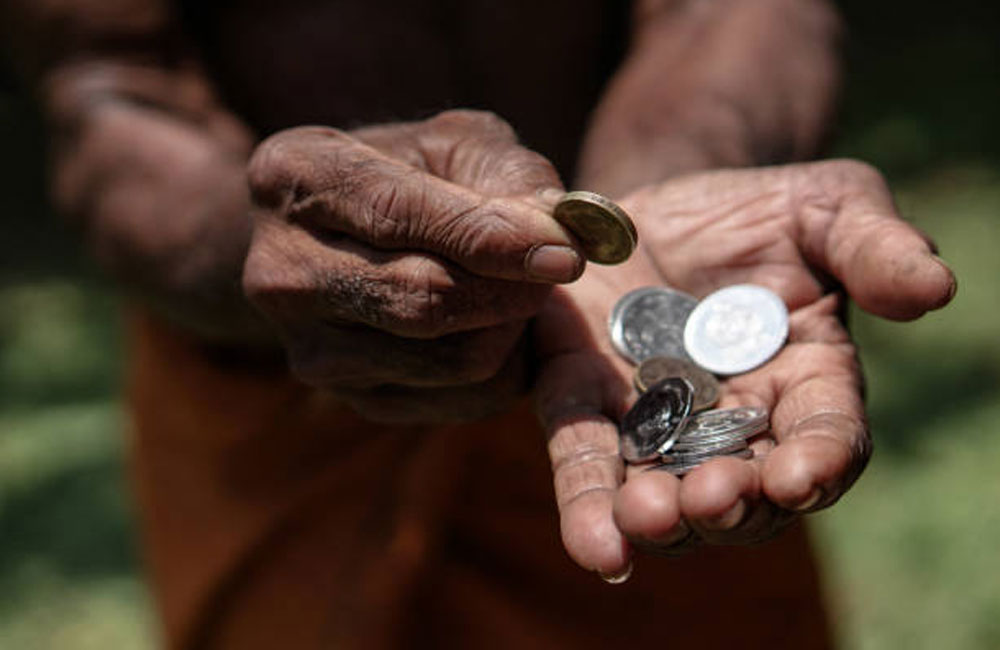
Who cares for the poor? Your guess is as good as mine
It’s now a year since the NPP government was overwhelmingly voted into power at the 2024 general elections. The new government in the run-up to the general election promised much, but today has little to show.
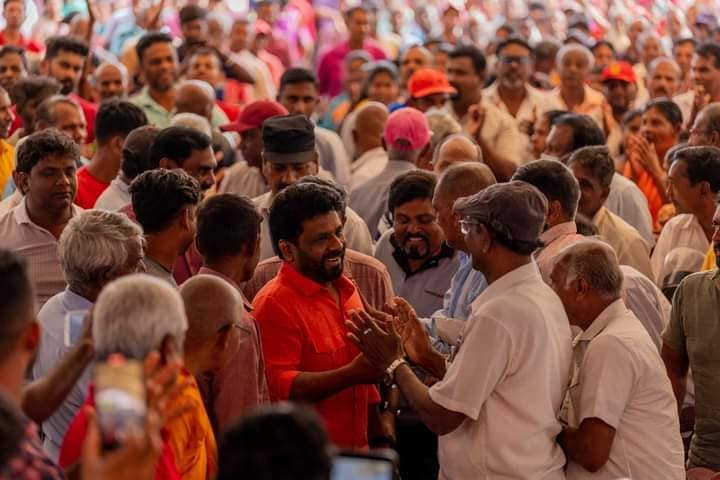
With hunger and malnutrition stalking the land at the time, the NPP promised to bring down the cost of living. It described the International Monetary Fund agreement signed by past president Wickremesinghe as being one of the main causes of rampant povertyand promised to renegotiate the agreement.
One year later however, the poor continue to be poor and live in extremely distressing conditions. UNICEF in its report on Lanka for 2025 points out that approximately one in four under-five-year-olds are not growing as they should. The report adds one in six babies are born with low birth weight. The obvious conclusion is that the economic crisis has made it harder for families to access adequate healthy food.Making matters worse, today the government has gone back on its word regarding renegotiating the IMF agreement and has become one of its chief proponents. Sadly, the political opposition in parliament, rather than coming together to pressurise government to tackle this important issue, continues bickering among themselves. For opposition political parties, the main problem seems to be the question of who would lead a combined opposition –not problems faced by the people.
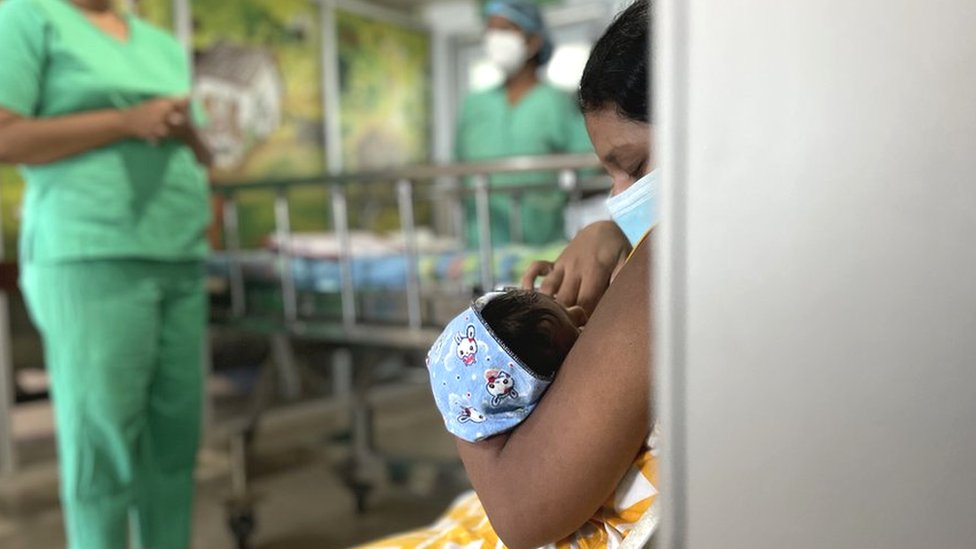
The health sector remains in a mess. Doctors are threatening trade union action if a solution to their problems is not proposed within 48 hours. The country faces a critical shortage of specialist doctors, with experts calling for around 4,000 specialists by 2025, while the current number is around 2,000.
Doctors also claim essential drugs are in short supply with many varieties of medicines not available at government hospitals. This is especially so in the case of cancer patients as well as those suffering heart diseases, diabetes and replacement surgeries where hospitals are faced with severe shortages.

Resultantly, patients at government hospitals are often called to purchase these necessities at their own expense from private agencies at astronomical prices.Since those seeking treatment at government hospitals are from the poorer sections of the community, they are unable to meet these costs.
If these problems are not corrected now, patients from poorer backgrounds may soon be faced with a situation where they have no alternative but ‘to simply lie down and die’.
While it could be that a few corrupt individuals are sabotaging the control, purchase and distribution of medicinal drugs, politicians in government or in the parliamentary opposition seem unable or unwilling to drop their differences to tackle these issues. Doctors themselves have become frustrated and are now threatening to take trade union action if the government does not propose a time-bound solution to problems in the health sector, as well as to salary anomalies of the doctors themselves. Teachers and school principals too, have threatened trade union action if outstanding issues faced by them are not attended to sooner rather than later.
 UNICEF
UNICEF
While ‘we the people’ understand most of the problems faced by our present rulers were caused by past governments, the NPP regime cannot now try to wash its hands of past misdeeds. They too joined hands with different past regimes and are also responsible for the corruption and misrule during those days.
On the subject of corruption and misrule, however, the present NPP is living up to its word. From the highest in the land, to ex-ministers, to ex-deputy ministers and other high ranking state bureaucrats, government has let the law take its course without interference. Today, many of these individuals are either in remand custody, charged with specific crimes or languish in prison.
While the parliamentary opposition has as yet to lead demonstrations against the cost of living, lack of medicaments and malnutrition among our children, they were quick to come together against the arrest and prosecution of past political leaders. In fact, it was the arrest of immediate past president Wickremesinghe which brought the diverse parties of the opposition together, NOT the people’s plight.
Last week’s joint opposition rally at Nugegoda was a spin off from that incident and even there the main opposition groups stayed away. So who cares for the people?
Then again, a single year in power cannot solve decades of corruption, abuse and misrule.
(Source - DailyMirror)

Losing millions in silence: Why Sri Lanka must lift Palm Oil ban now
- Over $ 175 m spent on edible oil imports between 2021 and 2025 when ban on oil palm cultivation first commenced in April 2021
- Total sectoral investment in oil palm cultivation and processing estimated to exceed Rs. 23 b
- Recognising immense potential, Govt. at the time promised to extend tax concessions for establishment of new oil palm cultivation in 2009 and even formally endorsed expansion up to 20,000 hectares by 2016
- Plantation companies say Sri Lanka can revive palm oil sector by lifting the ban and adopting sustainability standards, integrating smallholder farmers, reforming import taxation and investing in R&D and traceability systems
- India has already moved decisively in this direction, expanding palm oil cultivation by 45% in five years with ambitious plans to reach 1.7m hectares by 2030

The Planters’ Association of Ceylon (PA) is urging the Government to act swiftly to lift the ban on oil palm cultivation, warning that with each passing day, the losses to the nation keep growing.
The PA noted that an estimated amount of over $ 175 million has been spent on edible oil imports between 2021 and 2025 when the ban on oil palm cultivation first commenced in April 2021.
It also noted that Sri Lanka continues to spend exorbitant sums on foreign exchange for edible oil imports that could have been substantially offset by local production.
Once positioned as a key pillar in the nation’s crop diversification strategy, the abrupt policy reversal in 2021 has stalled progress toward edible oil self-sufficiency and dealt a setback to Sri Lanka’s broader economic recovery.
Palm oil cultivation was first introduced to Sri Lanka in 1968, but only began to gain traction in the early 2000s when Regional Plantation Companies (RPCs) sought alternatives to loss-making rubber. Recognising the crop’s immense potential, the Government at the time promised to extend tax concessions for the establishment of new oil palm cultivation in 2009 and even formally endorsed expansion up to 20,000 hectares by 2016.
Sri Lanka’s annual edible fat and oil requirement stands at approximately 264,000 metric tons. Yet local production meets barely a quarter of this demand, forcing the country to depend heavily on imports.
The result is a recurring foreign exchange drain estimated at around US $35 million annually, with cumulative losses already surpassing US $175 million since the ban was imposed.
Before 2021, local production of palm oil supplied a significant share of the domestic requirement, providing a cheaper and more efficient alternative to imported edible oils. Now, despite the ban, palm oil and related fats continue to enter the market under special import licenses which means Sri Lanka is paying foreign suppliers for products it could easily produce at home.
The RPCs have long argued that oil palm offered the most sustainable route to strengthen Sri Lanka’s plantation economy, diversify income streams and conserve foreign exchange. Palm oil yields three to eight times more oil per hectare compared to traditional oil crops such as coconut or soybean, using less land and fewer inputs. With the right policies in place, Sri Lanka could have achieved near self-sufficiency in edible oils, saving billions in import expenditure while generating new rural employment as well. Instead, the ban has left the sector in limbo, with crippling investments and triggering a chain reaction across multiple industries that depend on affordable edible fats.
Millions lost to imported saplings left unused
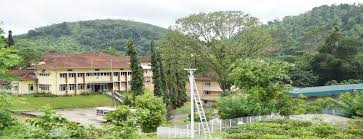 Rubber Research Institute
Rubber Research Institute
Before the policy reversal, the Government itself recognised palm oil’s economic promise. In 2009, hybrid seed imports were granted tax concessions and the Rubber Research Institute was tasked with developing local cultivation technology. By 2016, the state had formally endorsed an expansion of up to 20,000 hectares, limited to marginal and degraded lands to avoid any environmental harm. Encouraged by these clear policy signals, leading plantation companies, including Watawala, Namunukula, Elpitiya, Horana and Malwatte Valley, invested billions in nurseries, mills and research facilities. The total sectoral investment in oil palm cultivation and processing is estimated to exceed Rs. 23 billion. However, In April 2021, the Government abruptly prohibited further oil palm cultivation and the import of crude palm oil.
According to the PA, the value of seedlings and young plants that had to be written off exceeded Rs. 550 million. These were saplings imported at considerable cost, specially bred for Sri Lankan soil and climatic conditions and expected to yield for up to 25 years. Today, those imported saplings lie unused, a clear symbol of policy inconsistency and wasted national wealth.
“The losses from these abandoned nurseries go far beyond what the industry has absorbed” noted PA Secretary General Lalith Obeyesekere. “These were imported assets, paid for in foreign currency. The ban means the Government is now paying more each year to import edible oils that could have been produced locally. It is time to act with pragmatism and vision. Every day the ban remains in place, the country loses money, opportunities and credibility,” he added.
A ripple effect across industries and rural economies
The sector contributed an estimated Rs. 2.5 billion into rural households annually. With the ban, these communities have experienced a sharp decline in incomes, while millers, refiners and downstream manufacturers struggle to manage shortages. The bakery and confectionery industry, valued at over Rs. 200 billion, has faced significant price hikes for inputs such as margarine and cooking oil where costs are ultimately passed down to consumers.
Over 5,000 direct jobs and 21,000 dependent livelihoods were tied to the sector, with oil palm workers earning nearly double the wages of their counterparts in tea and rubber. Ironically, environmental concerns are frequently raised to defend the ban, yet global data tells a different story. Palm oil is the world’s most efficient oil crop, producing 40% of the world’s vegetable oil on only 6% of cultivated land. Countries like Malaysia, Indonesia and even India have embraced palm oil, pairing cultivation with strict sustainability standards such as RSPO, MSPO and ISPO certifications, along with zero-waste and smallholder inclusion models. In Sri Lanka, most oil palm expansion took place on old rubber lands that had already reached the end of their productive life, without any deforestation.

Moreover, palm oil’s role in food security and health is often overlooked. Naturally trans-fat-free and rich in antioxidants and vitamin E, it is recognised globally as a healthier alternative to hydrogenated fats. Both the World Health Organisation (WHO) and the World Wide Fund for Nature (WWF) have acknowledged that, when cultivated responsibly, palm oil remains the most sustainable and scalable solution to the world’s edible oil needs. Substituting with coconut oil undermines a lucrative export industry that earned LKR 63 billion in 2020.
A sustainable future for Plantation industry
The reinstatement of oil palm cultivation could immediately lower Sri Lanka’s import expenditure, generate local employment and restore profitability to the plantation industry, which has struggled under the weight of policy uncertainty. It could also enable the Government to reposition the plantation sector as a modern, export-driven industry, one capable of supporting smallholders, embracing sustainable standards and attracting new investment.
Sri Lanka can revive its palm oil sector by lifting the ban and adopting sustainability standards, integrating smallholder farmers, reforming import taxation and investing in R&D and traceability systems. India has already moved decisively in this direction, expanding palm oil cultivation by 45% in five years with ambitious plans to reach 1.7 million hectares by 2030.
The PA emphasised that the future of Sri Lanka’s plantation industry lies in adopting forward-looking, evidence-based policies and oil palm represents a viable and sustainable alternative for the sector’s long-term growth.
(Source - ft.lk)
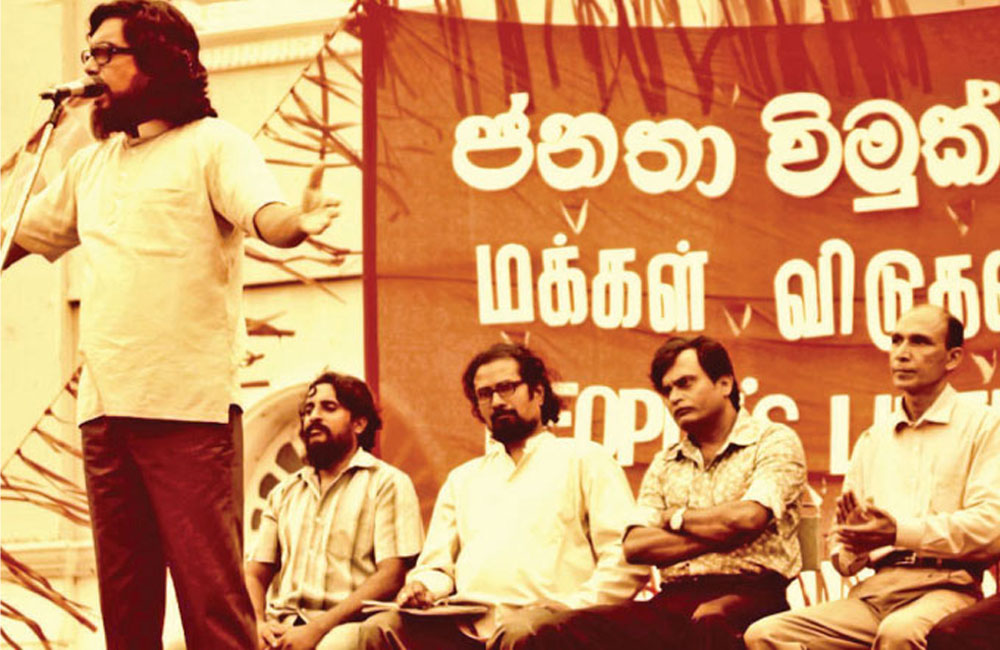
Blind Party Loyalty Will Hinder Nation-Building And Prosperity
A Degree Of Complaisance And Inclusivity Will Go A Long Way
Comrade Rohana Wijeweera, the founder of the Janatha Vimukthi Peramuna (JVP), was arrested and subsequently murdered 36 years ago on November 13. His disappearance in 1989 symbolised the turbulent end of the JVP’s second insurrection, extreme political violence involving the State, its affiliated groups, and the JVP itself. This offers us the chance to reflect on the past and the important lessons that can be learned, which will be crucial for Sri Lanka's future.

1989: A Watershed Year
The late 1980s were one of the most painful chapters in Sri Lanka’s post-independence history. The 1983 anti-Tamil riots and the 1987 Indo–Lanka Peace Accord turned the political tensions that existed into open conflict. The Accord, introduced as a peace initiative, instead triggered widespread mistrust, and heightened nationalism in the South. The JVP, operating underground as it was already proscribed, seized on these sentiments to launch its armed campaign against the State.
Both sides responded with escalating violence. Thousands of civilians, activists, and ordinary youth paid with their lives. Forced disappearances and extrajudicial killings were tragically commonplace.
The year 1989 also coincided with major global shifts. The fall of the Berlin Wall and the dissolution of the Soviet Union signified the decline of the socialist order, which had inspired many leftist movements around the world, including those in Sri Lanka. Neoliberal economic policies were rapidly expanding, reshaping international relations and national priorities.
Three and a Half Decades Later: A Changed Political Landscape
Today, Sri Lanka stands in a dramatically different political momentum. The JVP, which struggled through parliamentary democracy, has travelled a long path into mainstream politics. The National People’s Power (NPP) coalition led by the JVP achieved resounding victories in 2024, forming the government under President Anura Kumara Dissanayake.

The NPP administration has committed itself to combating corruption, controlling narcotics trafficking, and rebuilding the credibility of public institutions. Like other global movements for reform, such as the progressive shift symbolised by Zohran Mamdani’s recent mayoral win in New York, the NPP government emerged from widespread public demand for change following years of economic decline and mismanagement by previous regimes. However, gaining political power is only the first step. Transforming governance and rebuilding trust will require a sustained commitment to transparency, accountability, and social justice.
Blind Loyalty, Class Compromise, and the Social Justice Imperative
Sri Lankan politics has long struggled with the tension between blind loyalty to party, ethnicity, or faith, compromise with entrenched interests, and the quest for justice for all citizens.
Blind loyalty distorts democratic decision-making. It leaves little room for dissent or rational debate. During the Southern insurrections and the Northern conflict, loyalty to leadership, rather than to truth or humanity, justified violence and silenced differing voices. Such total and uncritical allegiance continues to threaten our institutions and civic values.
Globally, many countries struggle to separate religion from governance. With constitutional preferences granted to the majority faith, Sri Lanka—a multiethnic, multireligious society— faces the same challenge. Effective democracy requires that national policy be guided by equal citizenship, not sectarian influence.
Class compromise refers to alliances formed between leftist groups and capitalist factions. In Sri Lanka, partnerships between socialist parties and the SLFP date back to the 1950s. While such arrangements achieved short-term reforms, they also diluted transformative agendas. The global rise ofneoliberalism from the 1970s further tilted power towards capital, normalising privatisation and diminishing labour rights.
Against this backdrop, social justice seeks to remove structural barriers and guarantee equal opportunities, particularly for marginalised communities. It calls for redistributing power as well as resources — a principle increasingly central to contemporary political reform.
Learning from the Violent Past
The violent episodes of the late 1980s continue to be the most contested part of JVP history. Allegations against government death squads and armed JVP units remain unresolved, contributing to deep emotional trauma among families that had become targets of the violence.
To their credit, in 2014, the JVP publicly acknowledged its role in the conflict and expressed regret for the suffering caused (https://www.bbc.com/news/articles/c206l7pz5v1o). This was an important moral step toward national reconciliation. When the JVP returned to democratic politics in the 1990s, it was perceived as a sign of its readiness to participate in institutional procedures and nonviolent discourse.
Electoral success followed — especially in the 2004 parliamentary polls, where the JVP entered government as part of the United People’s Freedom Alliance (UPFA). This participation provided governance experience yet also raised internal debates about ideological consistency and coalition politics.

Economic Challenges and Public Expectations
Following the 2022 Aragalaya protests, public confidence in political elites plummeted. The eventual ascent of the NPP reflected broad frustration with corruption and economic instability. Inheriting a fragile economy, the new government must now balance fiscal constraints while protecting vulnerable communities.
Despite early criticism, the administration has worked within the IMF programme to achieve stabilisation, while also signalling greater safeguards for social welfare. The 2025 budget introduced measures aimed at supporting low-income families, promoting local industry, and restoring economic growth.
Success, however, will rely on visible results, particularly in reducing poverty, supporting small and medium enterprises, and strengthening agricultural and employment opportunities.
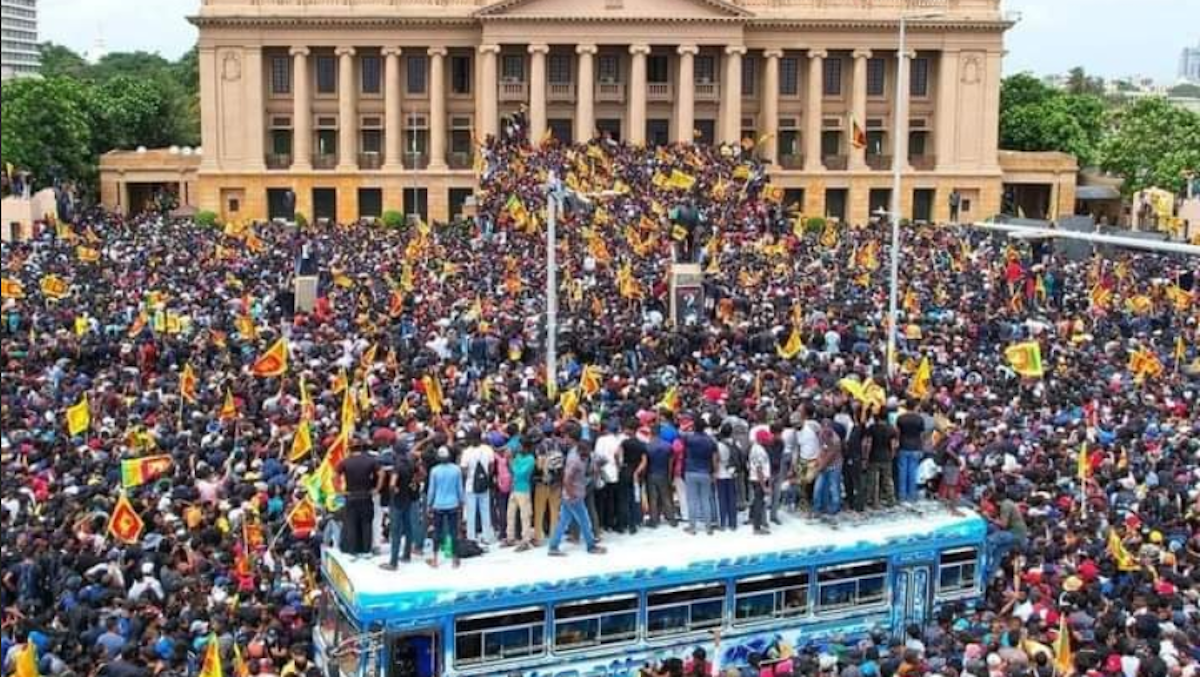
Towards Wider Inclusivity
The NPP’s electoral coalition brought together youth, workers, and professionals from diverse regional and ethnic backgrounds. It demonstrated that politics in Sri Lanka can transcend traditional divides.
Yet, much more must be done. The concerns of Tamil and Muslim communities, including language rights, land issues, and political representation, remain unresolved. A firm and fair commitment to meaningful devolution is essential.
Sri Lanka’s dependence on a majoritarian model of governance has increased mistrust and fueled decades of conflict. In contrast, global examples show alternative approaches. For instance, Belgium has achieved equality between its Dutch and French-speaking populations through a system of constitutional power-sharing. This power-sharing has strengthened national unity rather than undermining it.
The government’s recent commitment to allocating funds for Provincial Council elections is a positive signal. A clear roadmap for fully implementing the 13th Amendment would reaffirm Sri Lanka’s commitment to pluralism and reconciliation and reap the benefits of participatory democracy for our multi-ethnic land.
Responsible Governance: Evidence Over Emotion
The central message from the upheavals of our recent past is simple: democracy cannot rely on blind loyalty. Effective governance must be built on:
- Informed public trust
- Respect for facts and law
- Accountability for wrongdoing
- Openness to criticism
- Civic participation at all levels
Both Sri Lanka and the United States illustrate how political gains achieved through wide grassroots mobilisation must be continuously nurtured. The NPP came to power on a wave of public activism. Maintaining that engagement, especially among young citizens, will determine whether reform succeeds or stalls.
At the same time, legal and institutional reforms must be seen to deliver justice. While anti-corruption and anti-narcotics measures are underway, delays in holding offenders accountable may erode trust. People need to see that the law applies equally to all.
And above all, governance must remain focused on easing the daily burdens of citizens: cost of living pressures, unemployment, healthcare, and education. Economic stability and social dignity must progress hand in hand.
Conclusion: A Future Built on Critical Thought
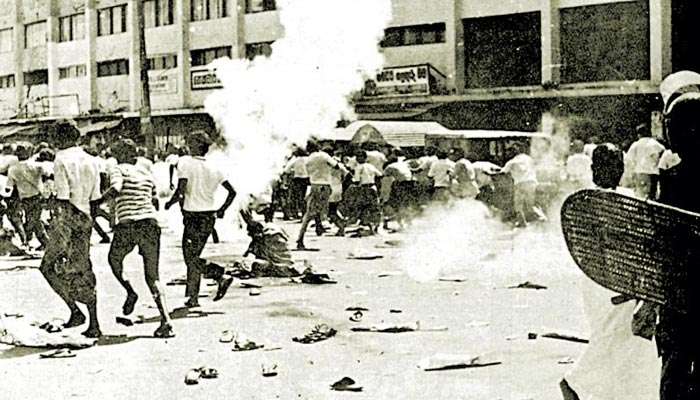
As we remember the harrowing events of November 1989, we are reminded that political violence and blind allegiance brought only divisions and tragedies. The responsibility of this generation, and its elected representatives, is to ensure such mistakes are never repeated.
Sri Lanka’s path forward hence requires:
- Critical thinking over unquestioning obedience
- Democratic debate over emotional polarisation
- Integrity over expediency
- Unity in diversity over majoritarian dominance
From the beginning, many JVP members and supporters believed that following orders without questioning was the only way to realise their goals. Nevertheless, that obedience can be attributed to the blind loyalty that unconditionally supported the unprincipled deviations from a left perspective, which ultimately led to devastating consequences.
A lack of democratic debate allowed the formation of groups within the JVP and caused the party to split more than once. Factions appear to have been unwilling to reach a consensus when their political perspectives were not always congruent. But throughout its existence, the JVP had, for the most part, reached decisions through unanimity.
Given that they have been elected to power, the NPP must take these issues more seriously. To prevent emotional polarisation, which will ultimately weaken or paralyse it as a political entity, democratic debate should be permitted, and critical thinking should be encouraged in the development of its policies to arrive at programmatic positions.
The JVP's transformation into a governing force serves as an illustration that societies can progress beyond their conflicts. The challenge now is to create a political culture where trust is earned through transparent actions and not demanded through loyalty.
If Sri Lanka can develop an inclusive and mature democracy that respects all of its citizens and honestly learns from its past, those painful memories will serve the noble purpose of guiding us toward a just and peaceful tomorrow.
Lionel Bopage

Knuckles World Heritage under Siege: MPs and Officials Behind Illegal Road Plan
In what appears to be a brazen assault on one of Sri Lanka’s most precious ecosystems, government-linked politicians and business interests are advancing illegal access through the Knuckles Conservation Forest a UNESCO-listed component of the Central Highlands of Sri Lanka. Once protected as a biodiversity haven, this range now stands threatened by attempts to carpet and open an 8-kilometre jeep safari route deep within its heart.
Environmentalist Sajiva Chamikara alleges that MPs E.M. Basnayake and Jagath Manuwarna, in collaboration with the Medadumbara Divisional Secretary and local tourism entrepreneurs, have secretly secured approvals to construct and pave a road cutting from Tangappuwa through into the core of the Knuckles range. According to Chamikara, the initiative is being driven not for conservation or community benefit but for commercial safari operations and hotel expansions.
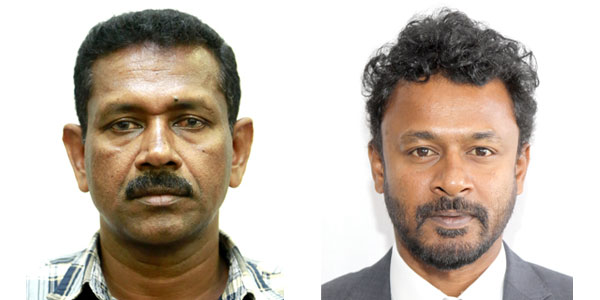 E.M. Basnayake and Jagath Manuwarna
E.M. Basnayake and Jagath Manuwarna
The Knuckles range, declared a World Heritage site for its globally significant biodiversity and status as one of Sri Lanka’s most intact montane ecosystems, is home to unique plant and animal life found nowhere else.
Developers are reportedly targeting the forest trail from Tangappuwa to Corbett’s Gap – slicing through the protected zone – under cover of “tourism development”. A meeting held on 22 August 2025, organised by the Land Use Planning Department at the International Buddhist Centre in Rangala, reportedly approved the plan, with participation by Manuwarna, the Tourism Minister’s private secretary, the Divisional Secretary and the Forest Conservation Department.
Chamikara says that subsequent meetings on 30 September and 30 October 2025, convened by the Divisional Development Committee, further progressed the agenda: hotel owners and safari jeep operators, some implicated in illegal land dealings inside the forest, pitched for vehicle access and road infrastructure. Eventually, it is alleged, Basnayake and the Divisional Secretary granted unauthorised permission to open the forest trail for safari jeeps.
If realised, the impact will be catastrophic. The Knuckles region accounts for more than one-third of Sri Lanka’s endemic flora, and half of its endemic vertebrates.
Ecosystem fragmentation, canopy removal, road construction and carpet surfacing in such a sensitive area especially one bridging wet and dry climatic zones threaten to raise local temperatures, disturb micro-habitats and invite invasive species such as Bovitiya to proliferate. Witnesses warn that the chain-reaction will include wildlife mortality from increased vehicle traffic, habitat loss and ecosystem collapse.
Chamikara charges that the scheme is being orchestrated by local power brokers: led by Ven. Dr. Kendagolle Sumanaransi Thera of the Tangappuwa-Rangala Buddhist Centre, the alliance reportedly includes hotel owner Dixon Tennakoon (Knuckles Base Camp), G.K.G. Gunathilaka (Knuckles Ceylon Bungalow) and several other businessmen, all working in league with political hand-tails and officials. The collusion of money, politics and conservation in this case paints a stark picture of governance failure.
The timing is telling. Under the banner of the government’s “Prosperous Country, Beautiful Life” slogan, the Central Provincial Road Development Authority is already advancing the Theldeniya-Corbett’s Gap road, with the section outside the forest already under development. The eight-kilometre segment inside the reserve, however, remains off official maps—until now.
As Sri Lanka balances tourism ambitions with conservation responsibilities, this story raises fundamental questions: Who protects the protected places? And how will the state account for the wholesale dismantling of a UNESCO-designated treasure? With the Knuckles at stake, the time for scrutiny, transparency and accountability has arrived.
Page 1 of 11